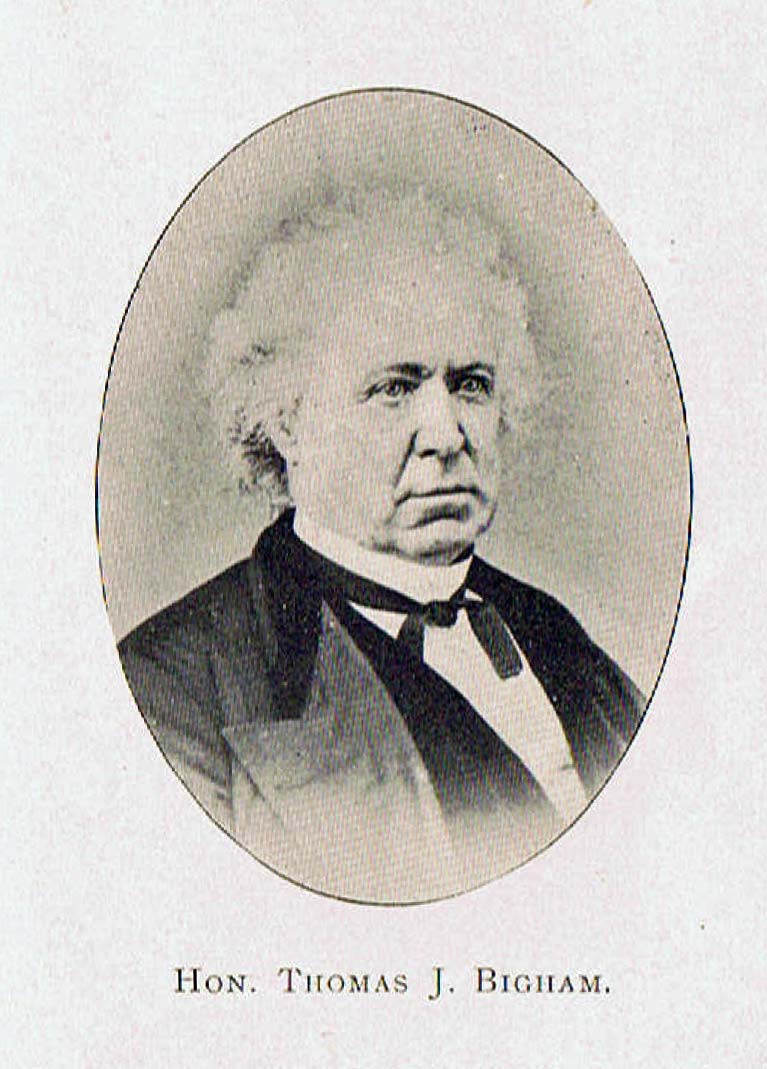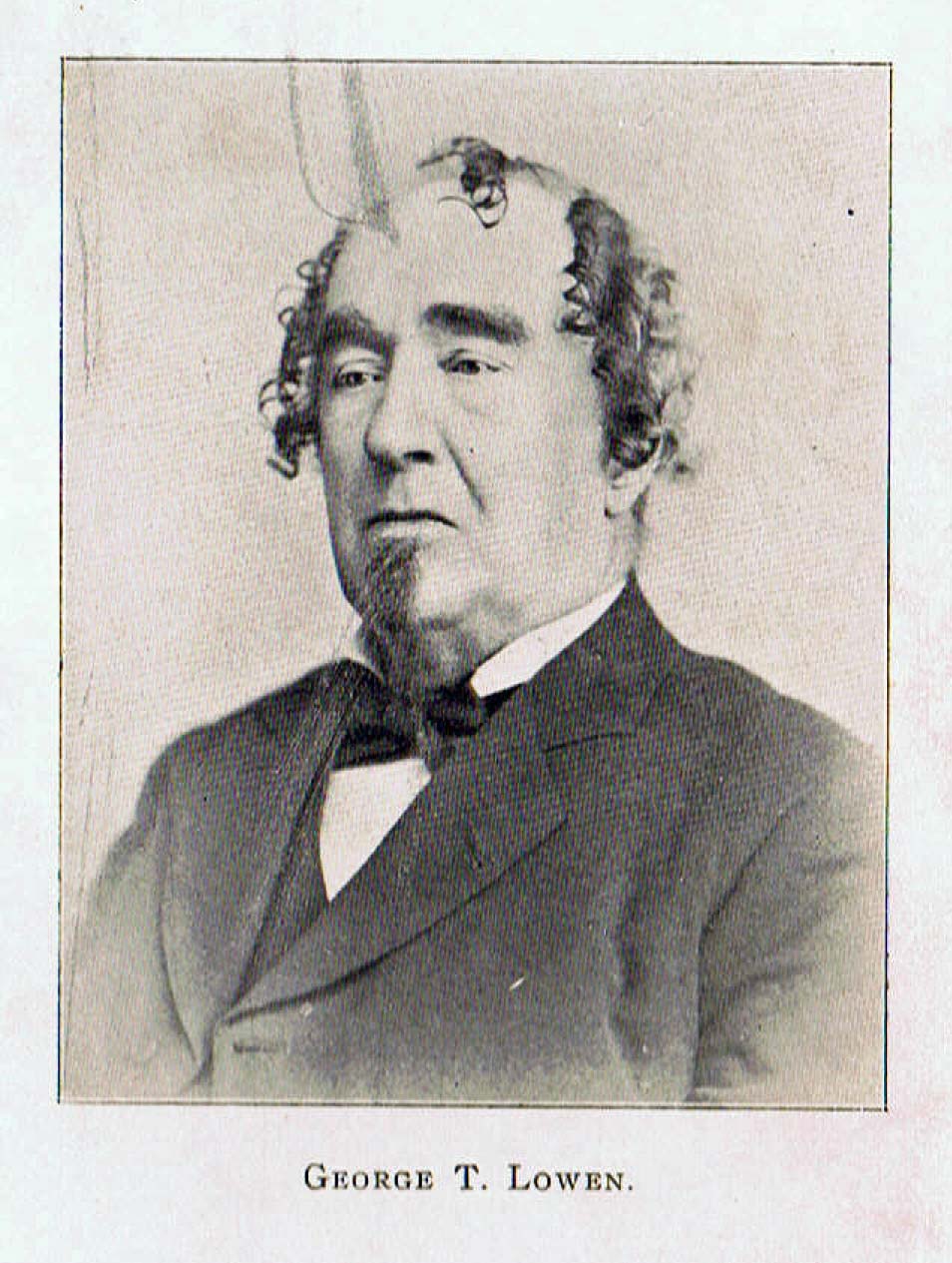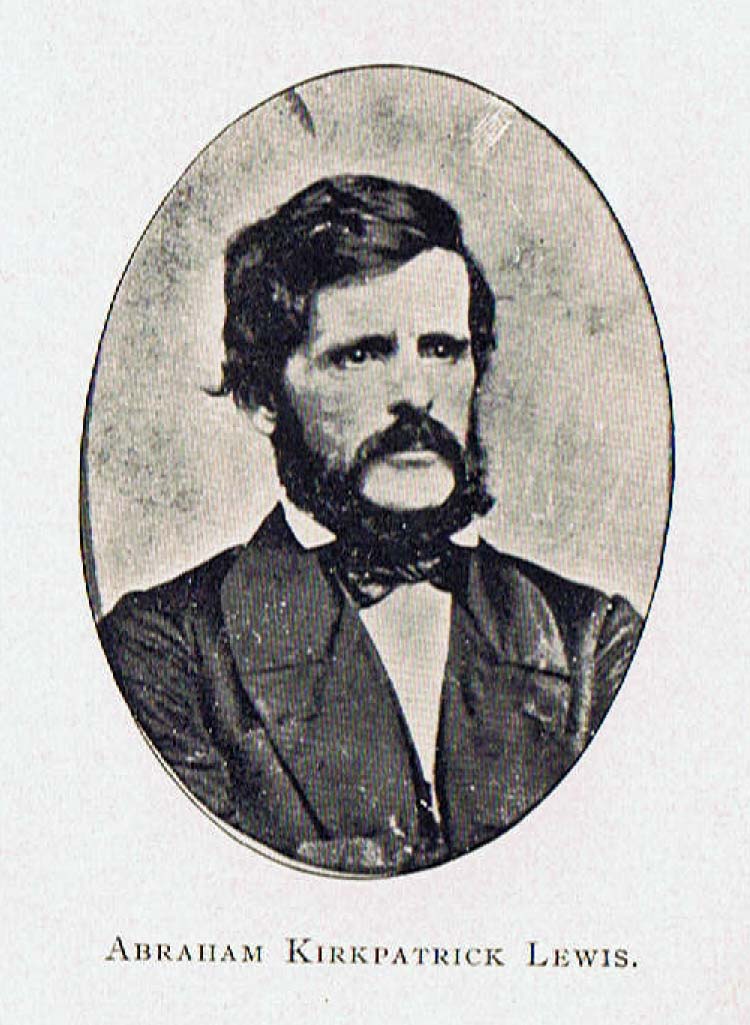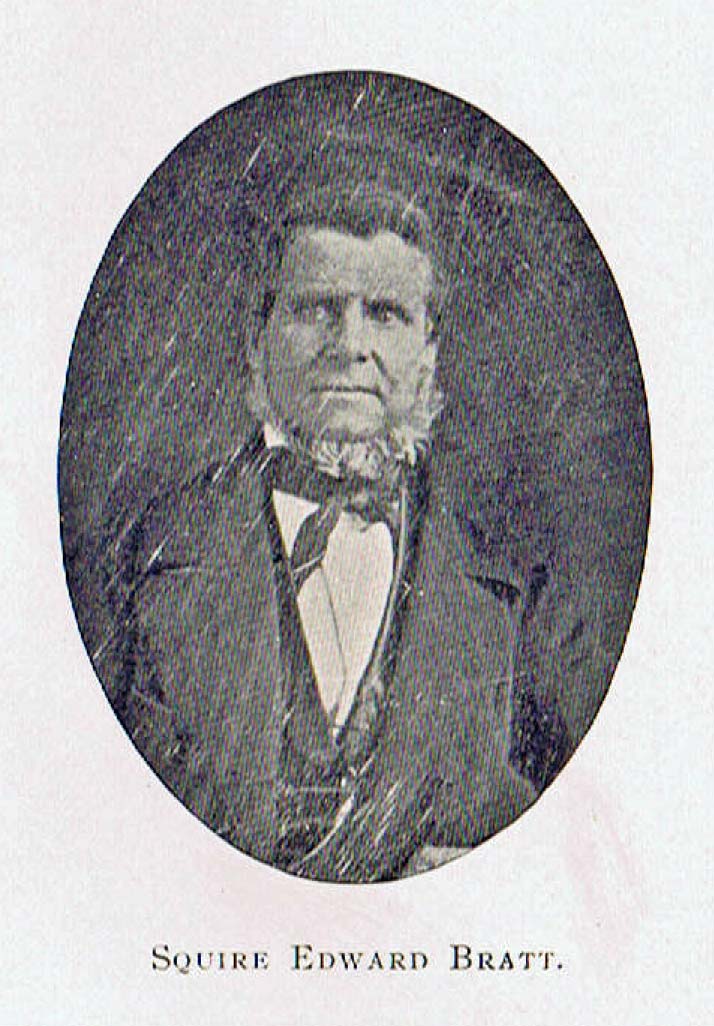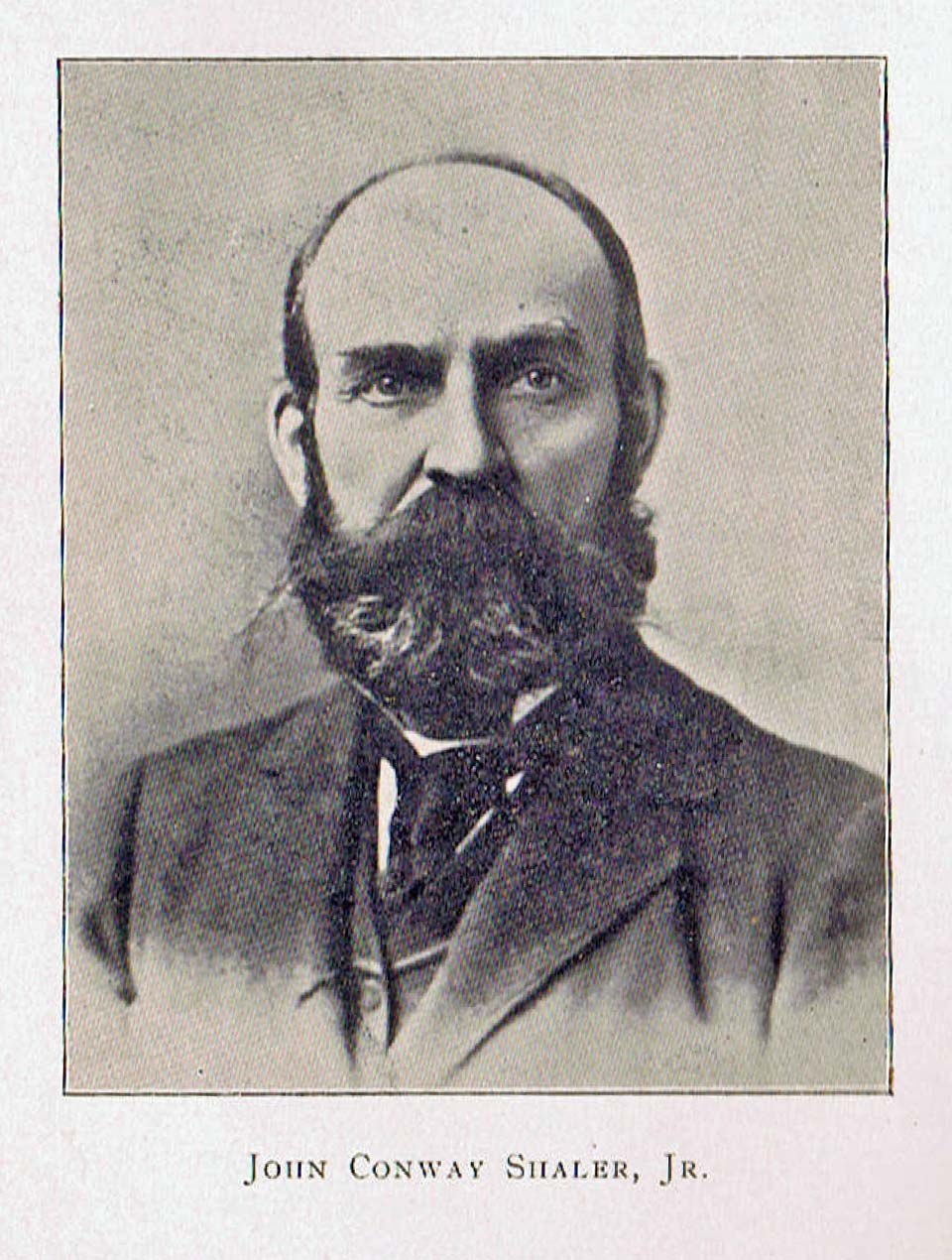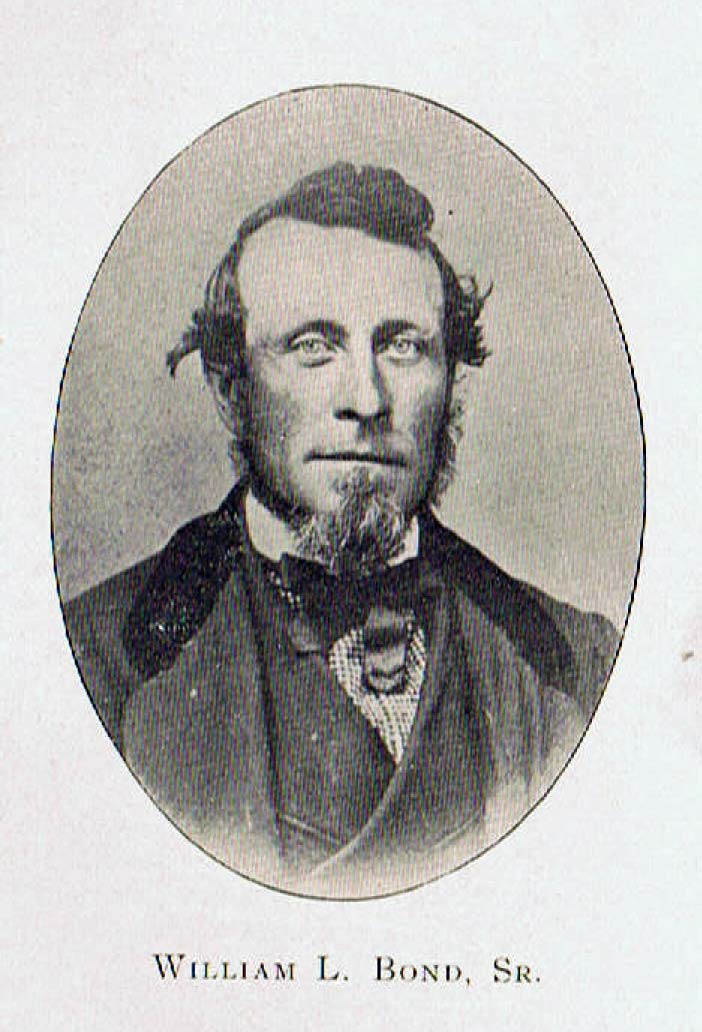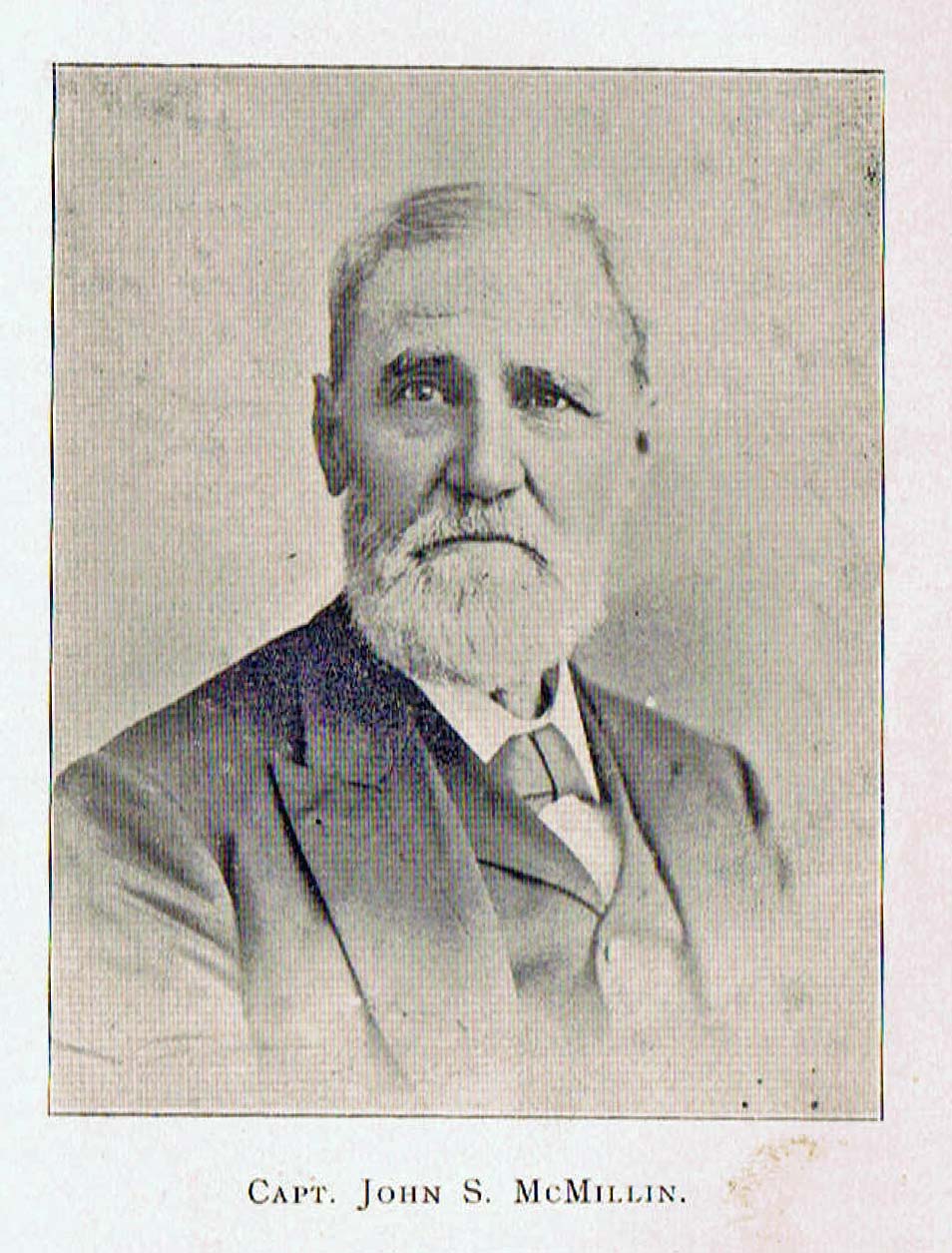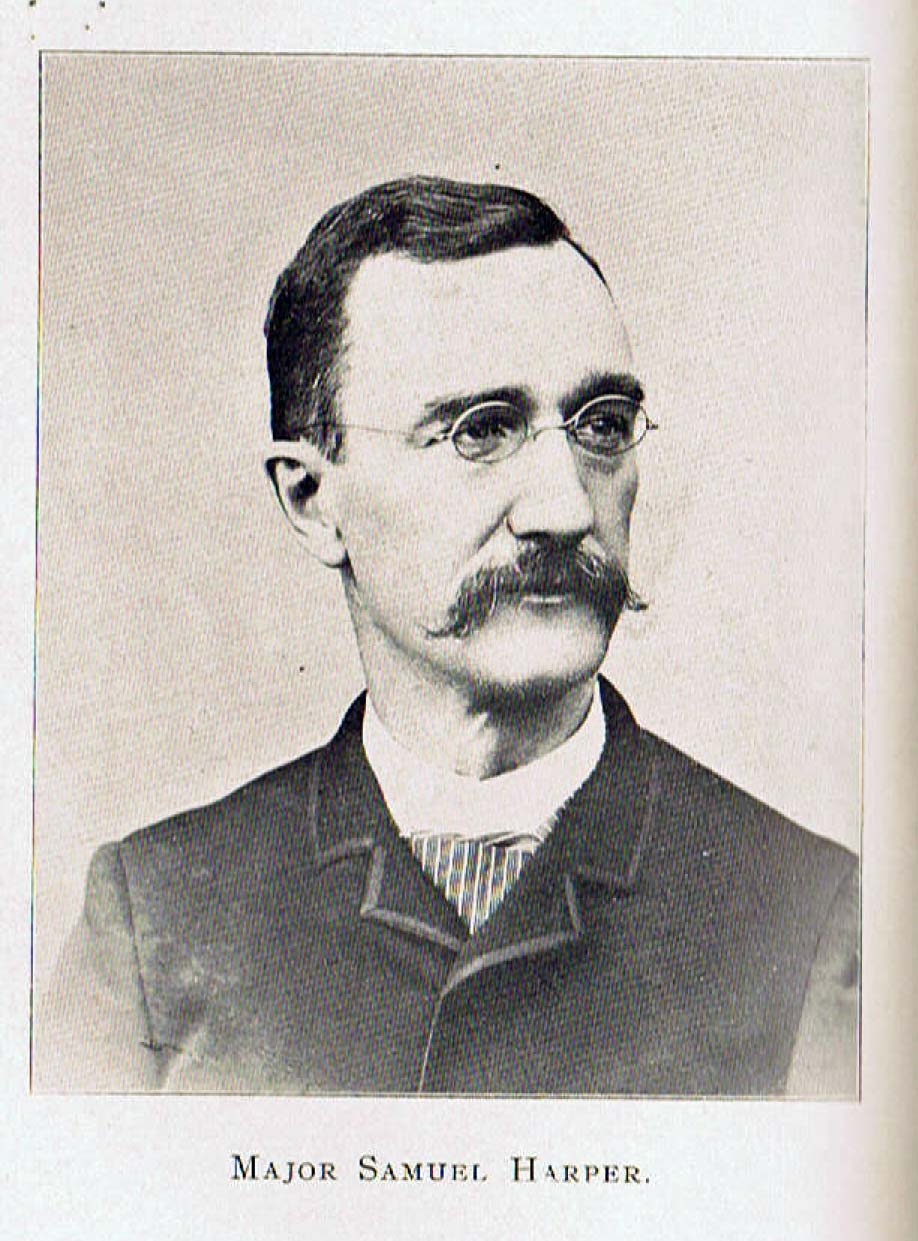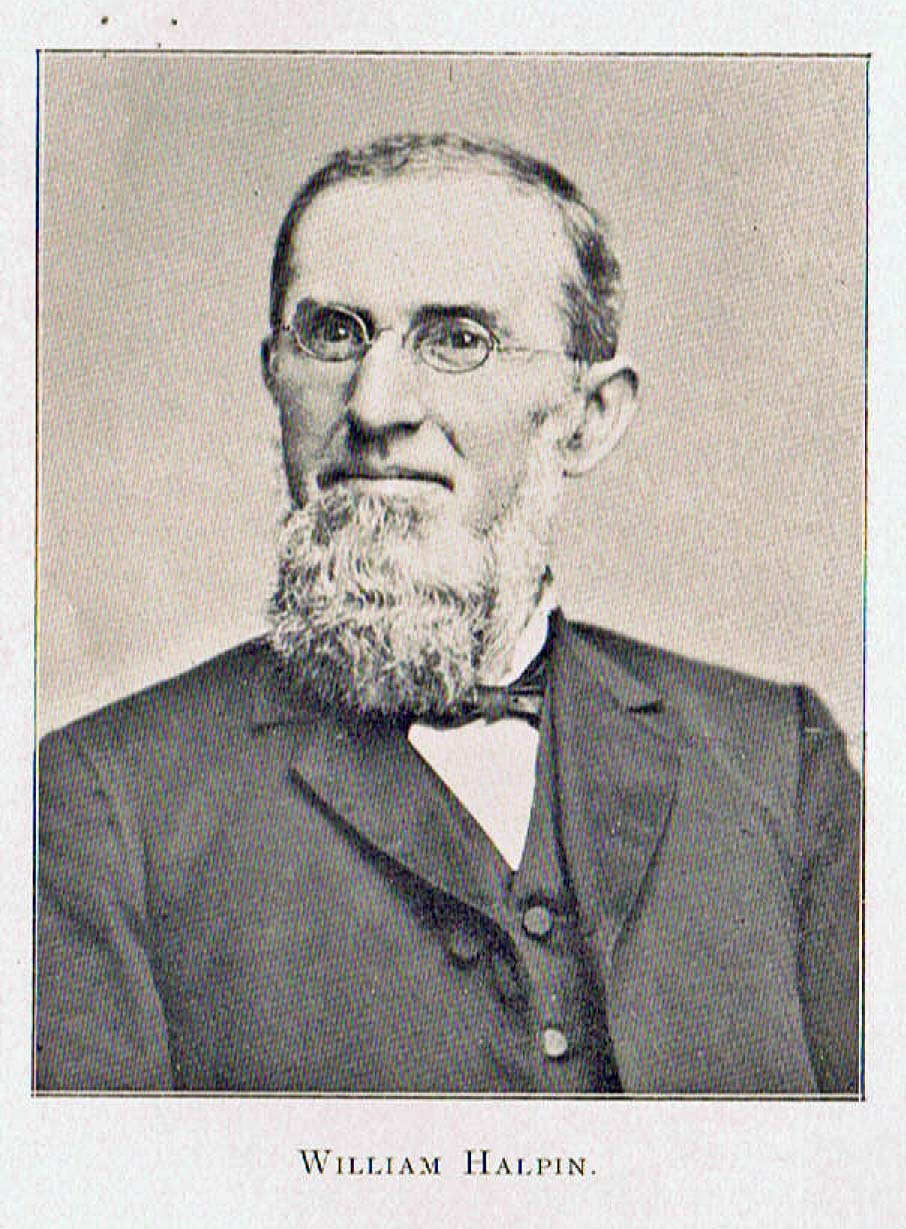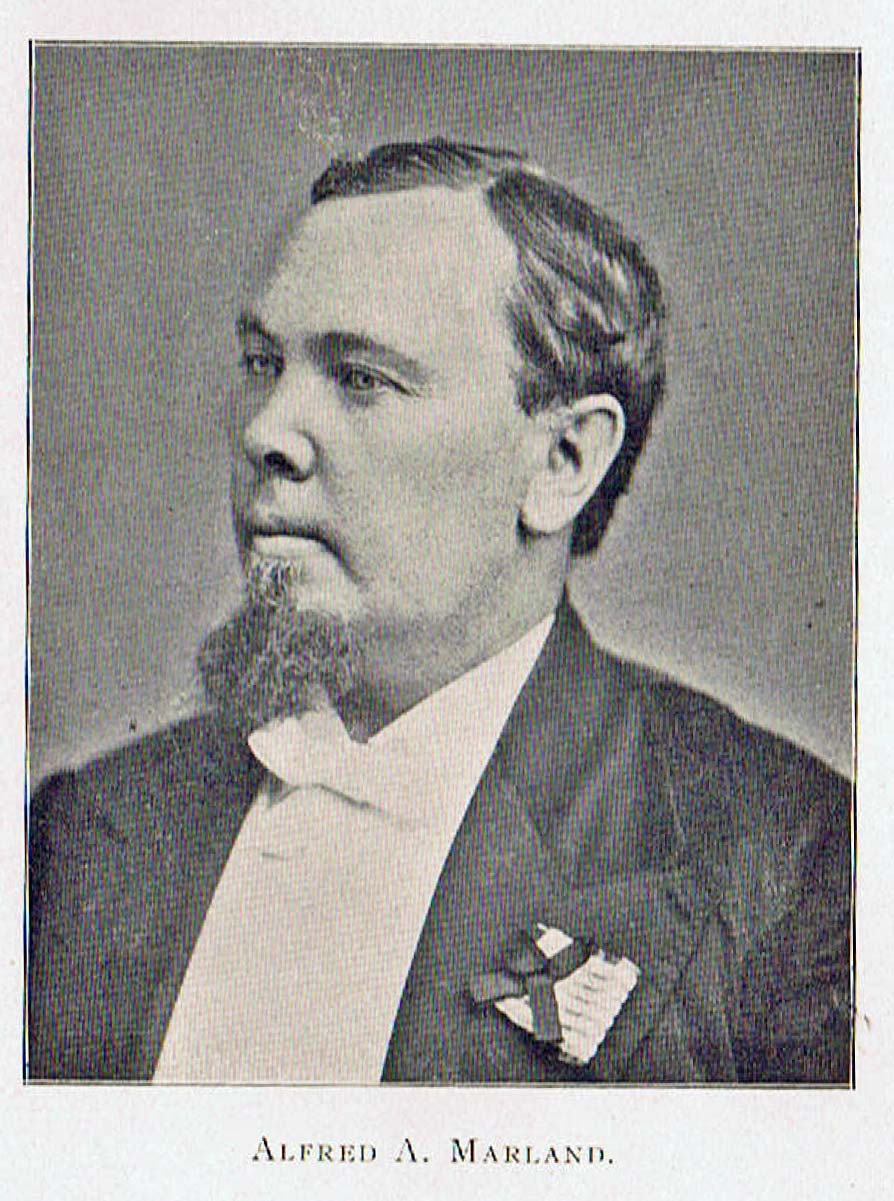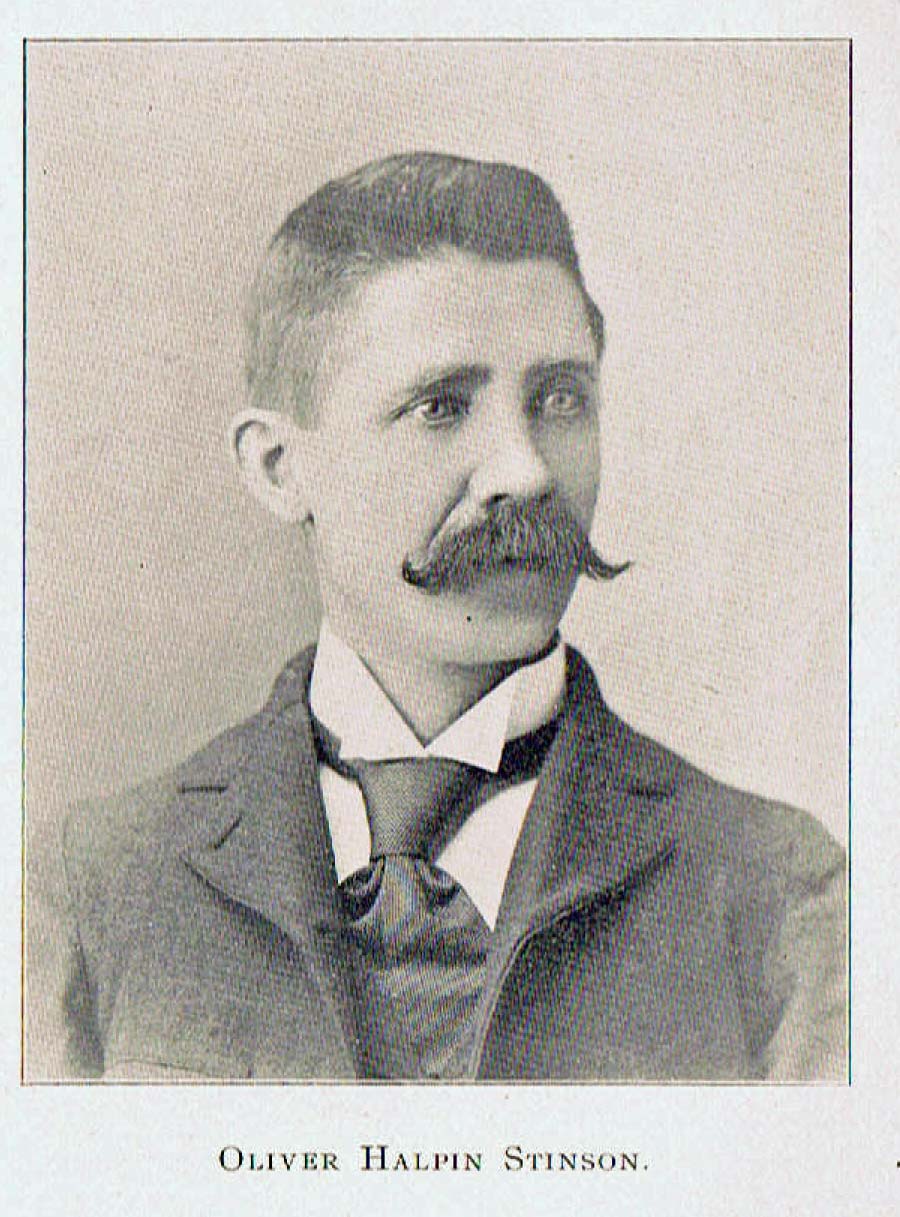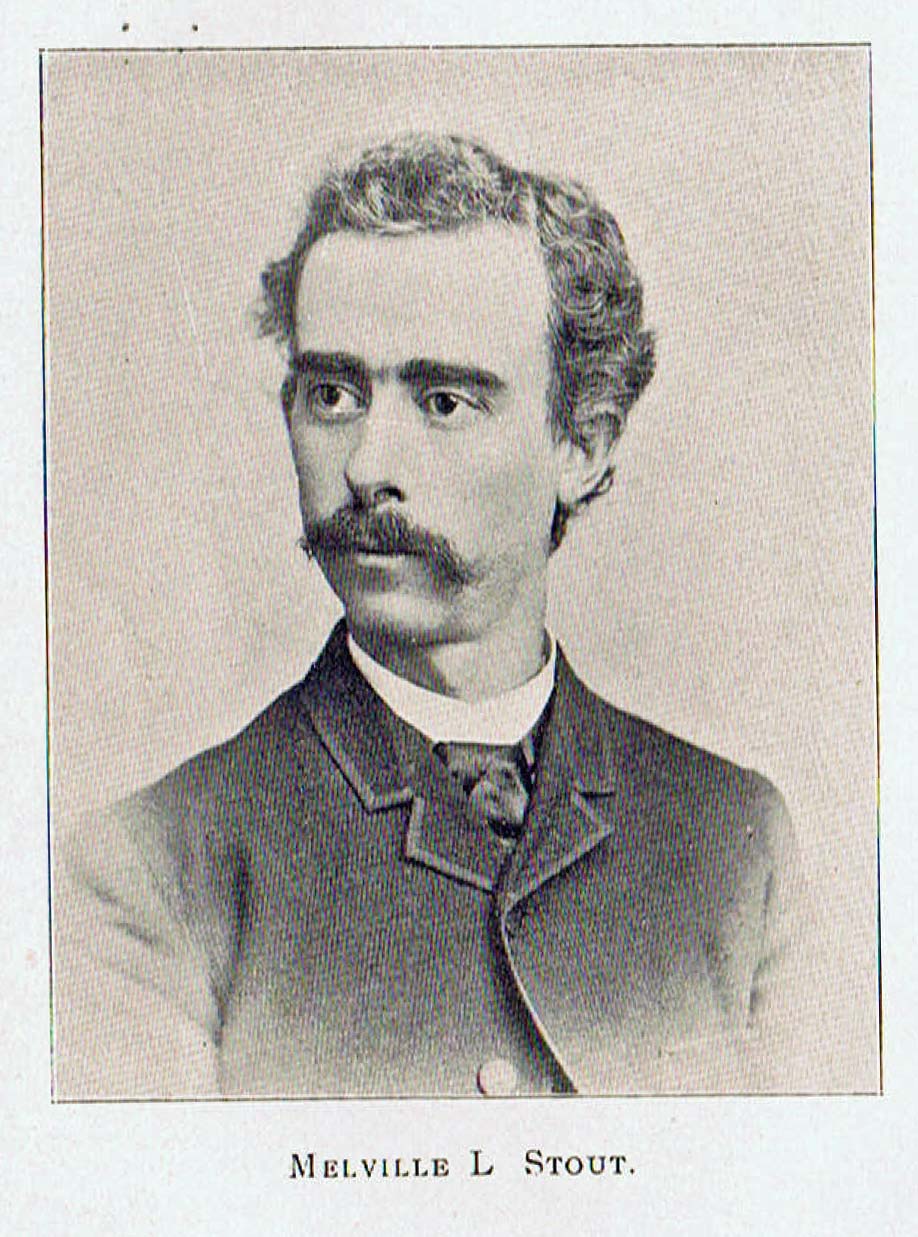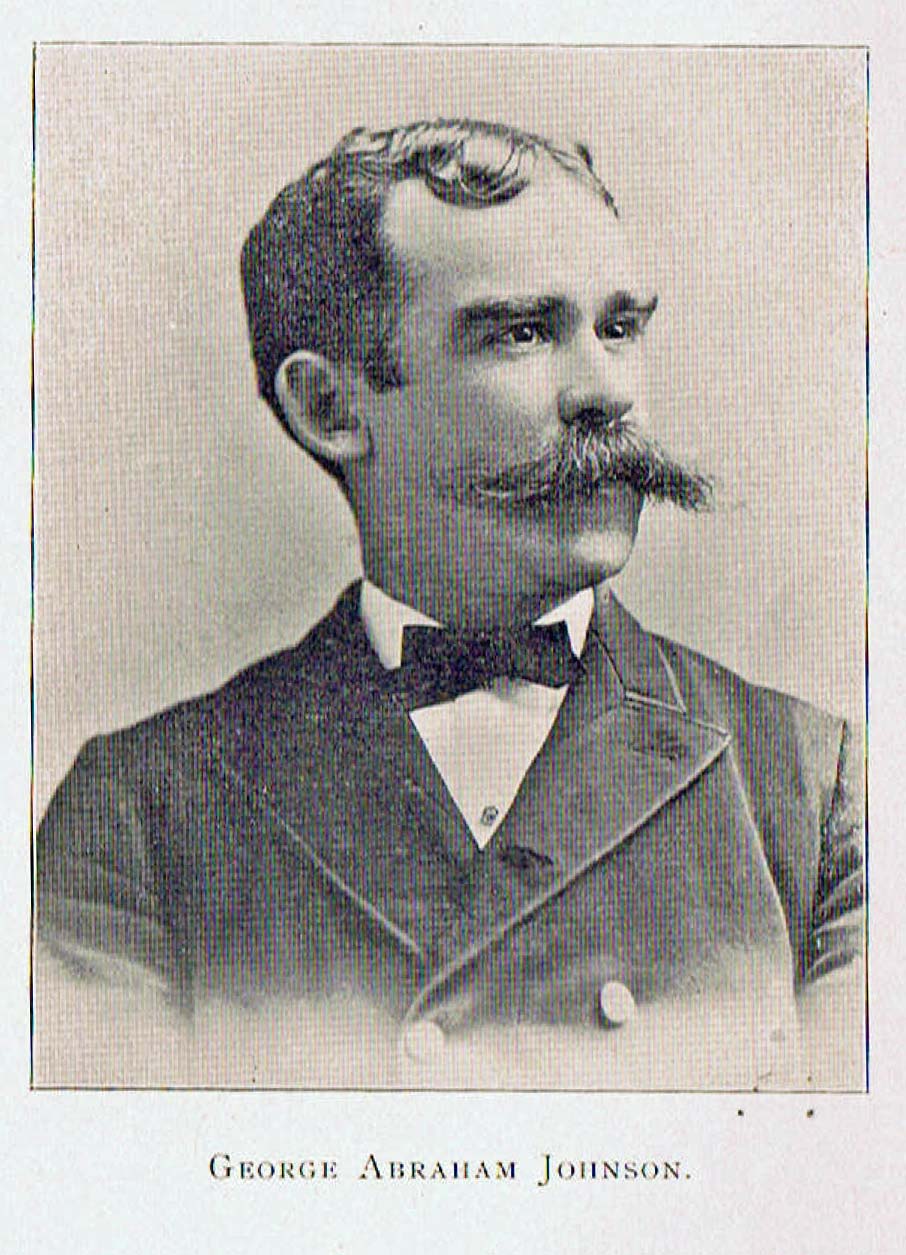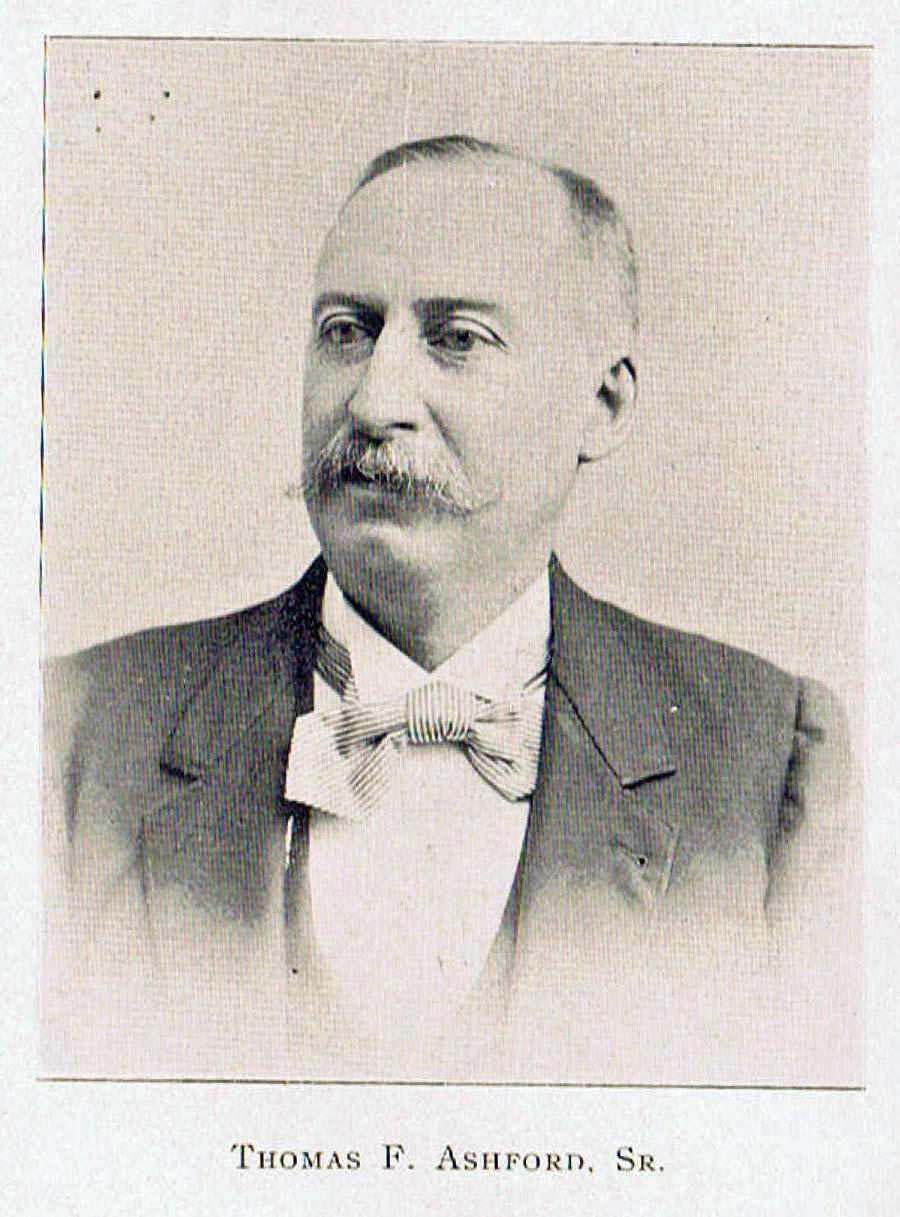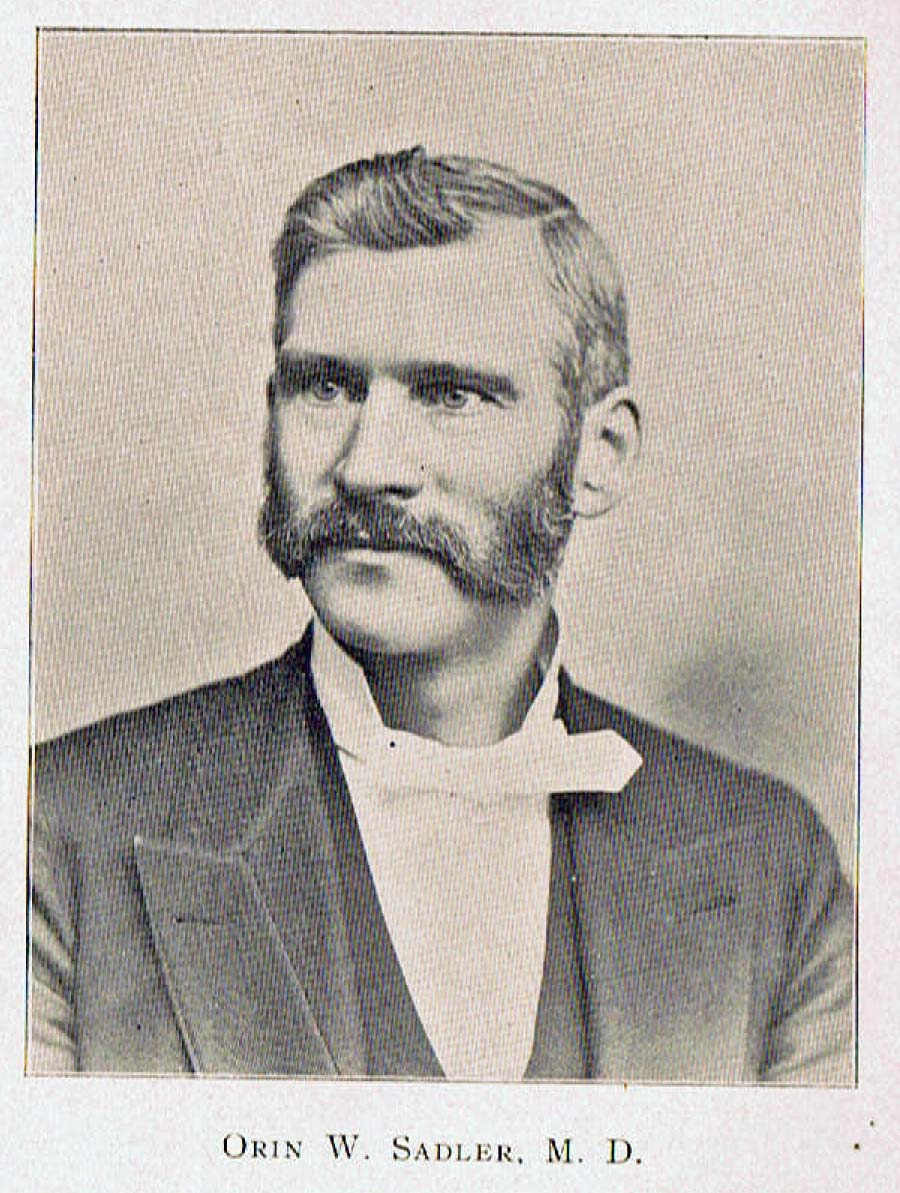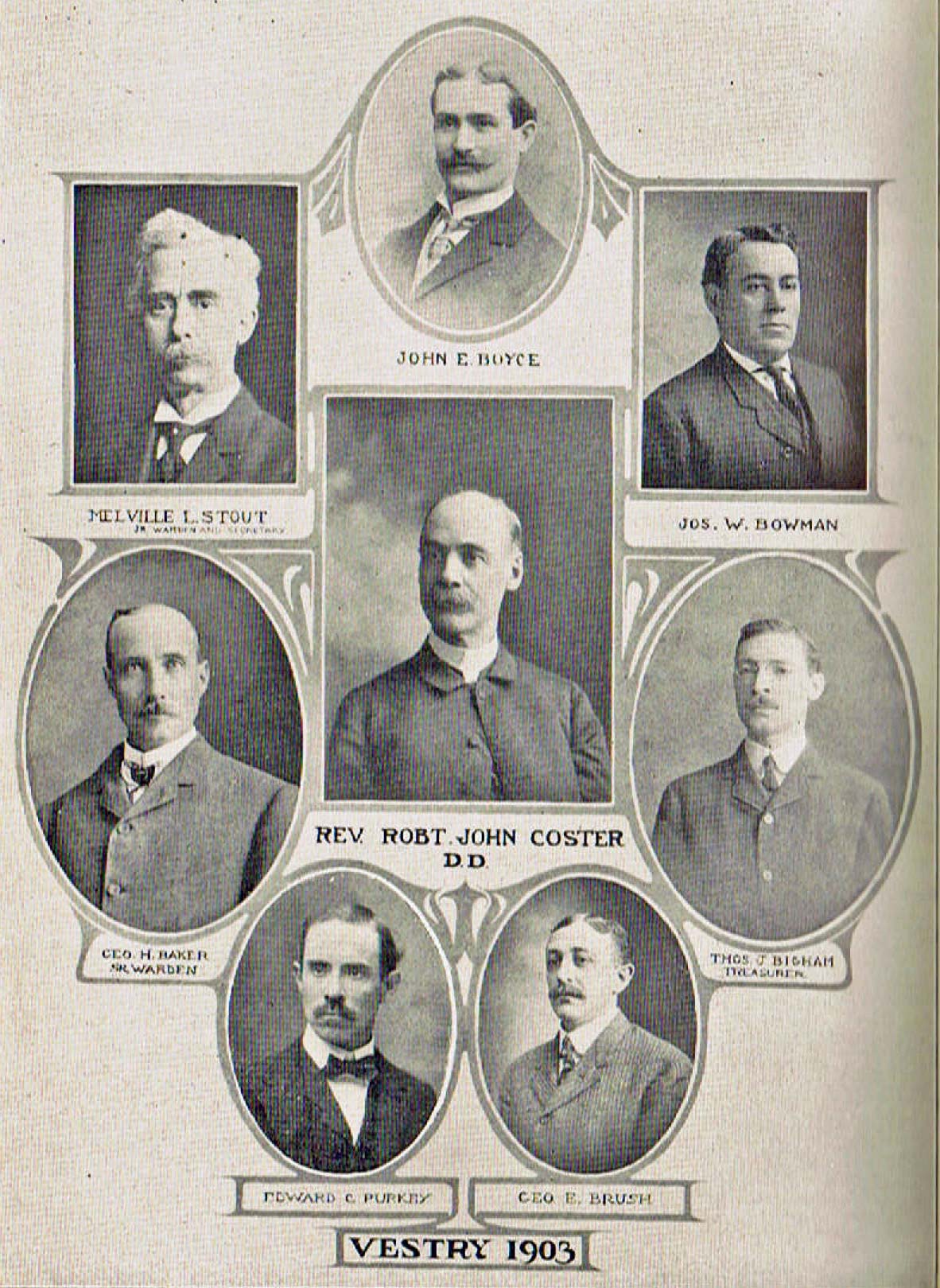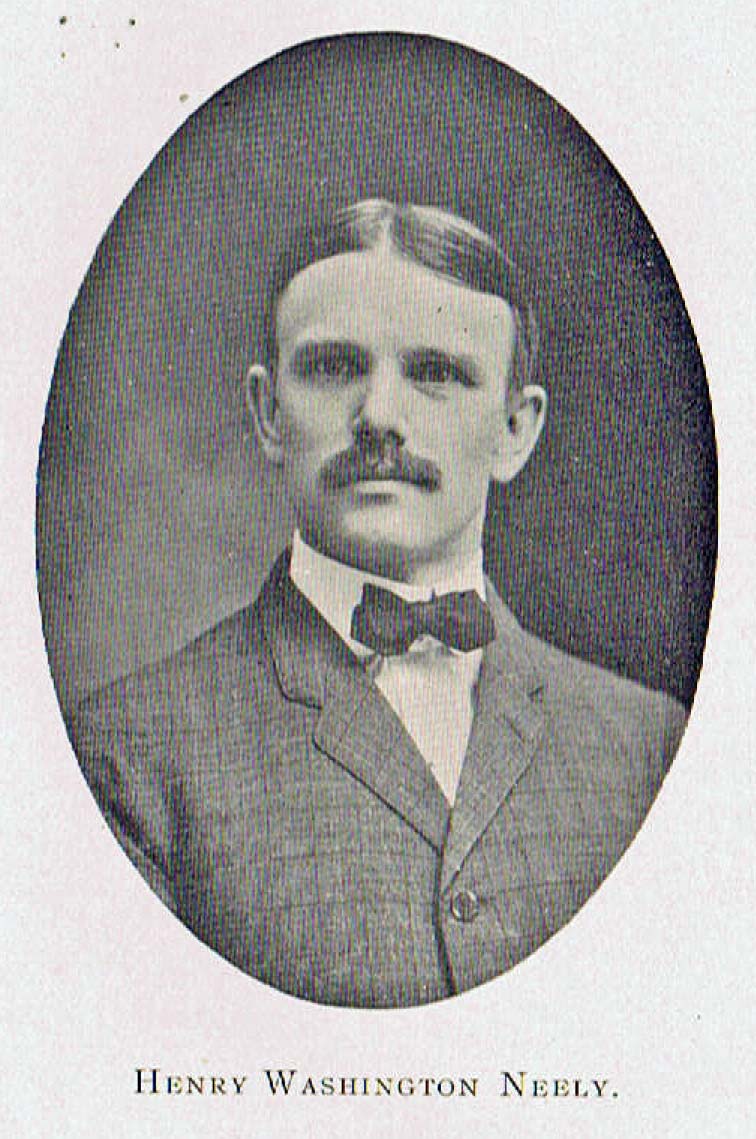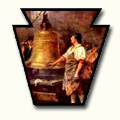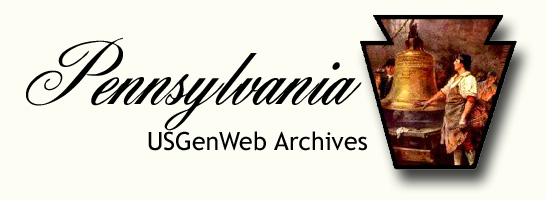
Allegheny County
Churches
GRACE CHURCH PARISH,
MOUNT WASHINGTON, PITTSBURGH, PA.
Pages 262 - 304
Biographies
Transcribed and contributed by Joan Skinnell Benincasa
A HISTORY
OF
GRACE CHURCH PARISH,
MOUNT WASHINGTON,
PITTSBURGH, PA.
WITH LIST OF PARISHIONERS, VESTRYMEN, BAP-
TISMS, CONFIRMATIONS, MARRIAGES,
BURIALS, ET CETERA,
BY
REV. ROBERT JOHN COSTER, D. D.,
RECTOR.
INCLUDING, ALSO, A SKETCH OF THE EARLY
HISTORY OF THE PARISH,
BY
HON. THOMAS T. BIGHAM,
LATE SENIOR WARDEN.
1903 :
WM. O. JOHNSTON & CO.,
PITTSBURGH.
|
PAGES |
||
printer friendly version of text
THE MEMBERS OF THE FIRST VESTRY OF GRACE CHURCH, 1851.
Thomas J. Bigham.
George T. Lowen.
A. Kirk Lewis.
Andrew Rowland.
William Adams.
Benjamin White.
Richard Stubbs.
The writer succeeded in getting the pictures and the
data for biographical sketches of only the first three.
HON. THOMAS JAMES BIGHAM.
Thomas James Bigham, son of Thomas and Sarah Christy
Bigham, was born in Westmoreland County, February 12, 1810, at the home of his
grandfather, James Christy. His father having died before he was born, and his
mother a few months after his birth, he was brought up by his grandparents, who
were Presbyterian Seceders, or Covenanters, of the strictest kind. He was
educated at Jefferson College, Cannonsburg, where he was graduated in 1834. On
leaving college he entered upon the study of law, and became a practitioner in
the Allegheny County courts.
He married Maria Louisa Lewis, daughter of Dr. Joel
Lewis and Mary Ann Lewis, the youngest daughter of Maj. Abraham Kirkpatrick, in
Trinity Church, December 30, 1846. His wife was born in Pittsburgh, June 8,
1819, and was raised in the Episcopal Church, her parents being members of
Trinity Church. In 1849, as he says in his sketch of the early history of Grace
Church, Mr. Bigham moved with his family to Mount Washington, and he and his
wife at once took steps to organize a Sunday School and church for the people of
the vicinity; and this was the beginning of Grace Church. Mr. Bigham was
confirmed by Bishop Alonza Potter, in Grace Church, September 14, 1854, and
became and thereafter continued to be a regular communicant to the end of his
days.
Mr. Bigham was prominent in the political affairs of
his State, even more than he was as a lawyer. He was a member of the State
Senate several terms, and afterwards held the position of State Statistician,
and gathered much valuable information concerning the industrial interests of
Pennsylvania.
263
He was a member of the first vestry of Grace Church,
elected at the organization of the parish in 1851, which position he held
continuously (except for a short period of absence from the parish) until his
death. He was for many years the senior warden, and frequently acted as lay
reader in maintaining the services during vacancies in the rectorship of the
parish. He often represented the parish in the Diocesan Convention, of which
body his legal attainments made him a valuable member.
He died November 9, 1884, having reached the ripe age
of 74. He was buried from Trinity Church November 11, and was laid to rest in
Allegheny Cemetery.
Mr. Bigham was one of the most widely known citizens of
Pittsburgh. For many years he was a leader in political matters, and his
speeches, his voice, and his presence all combined to render him prominent among
the men of his day.
In the address made at his funeral his pastor and
friend, Rev. R. J. Coster, spoke as follows:
"The close of a noble life has brought us together here
today. An aged servant of God, full of years, has gone to his rest, and we are
here to honor his memory. For many years he has been prominent in the affairs of
our city and State, and an active worker in the Church which he adopted from
choice and loved and reverenced from conviction. Honored for his integrity,
respected for his ability, and admired for his noble traits of character, he has
ended a long and useful life, and now sleeps in peace. His life record is before
you. Standing prominent among the leading men of our city for so many
years, he was a man well known amongst us. His public life is a part of the
history of our city and State. As a learned lawyer and a wise legislator he was
better known to most of you than he was to me. Justice will be done to his
memory in these respects by others better fitted than I am to speak of his
public career. But if you will bear with me a few moments I will speak a word or
two of him as the earnest churchman and the Christian gentleman. It has been my
privilege to be intimately associated with him for sixteen years as his pastor,
and one of the greatest pleasures of my ministry has been that of intercourse,
in the retirement of his home, with a mind and character such as he possessed.
"Always affable and courteous, one could not be long
with him without feeling the sincerity and nobleness of the man, while his
stores of learning and his wonderful memory, combined with his simple and
unpretentious manner, gave a charm to his conversation that is rarely equaled.
"As a churchman he was zealous and faithful, giving
liberally of his means and his time for the interests of the Church. His face
and his voice were long familiar in our Diocesan Convention, where he took an
active part in its legislation. He served his Church for many years as a
vestryman and warden, and as long as his duties and his health permitted he was
a regular and efficient Sunday School teacher and superintendent. It is rarely
that men in his profession, burdened with public duties, think that they can
find time for Sunday School work. All honor, then, to those who, like our
departed friend, can find it in their hearts to make sacrifices of time and
labor for the furtherance of the Gospel.
"There is one special trait of our friend's character
which I desire particularly to mention, namely, his simple, child-like faith.
Whatever gifts he had, and you know they were not a few, he seemed to lay them
all at the feet of Christ, and to say, like Samuel 'Speak Lord, for Thy servant
heareth.' I long for the firm grasp of the promises of God and the unfailing
trust in His mercy that this venerable man had. Nothing doubting, nothing
questioning, he accepted the ministrations of the Church in their fullness and
rested completely in the promises of God made to his faithful children in His
Church. Always in his place at public worship, and regular in his attendance at
Holy Communion, he showed to the world that his faith was indeed real and that
he was a true servant of his Divine Master."
GEORGE THOMAS LOWEN.
George Thomas Terendo Wells Lowen,
commonly called George, descended from that hardy race of seamen to whom England
owes her naval supremacy, was born in Middlesex, Southgate, Kent, England, on
November 20, 1809. He married Mary Cook (born in Margate, Kent, England, on
April 26, 1807),
265
in her native place, April 6, 1828. Six years later he left England for the
United States, having set sail from St. Catherine's Docks, London, on September
14, 1834, in the ship Allegheny, commanded by Captain Michells, and landed, with
his wife and five children, in Philadelphia on November 11 of the same year.
After spending one week in Philadelphia, he started for Pittsburgh in a stage
coach, and completed the rough journey in three days and three nights. He spent
two years farming down at Beaver, and then came to Pittsburgh and made his home
at the corner of Fifth avenue and, Washington street. The Pittsburgh Gas Works
had just been completed at that time, and Mr. Lowen was engaged by the company
to do gas fitting, and managed the first gas-fitting establishment set up in
Pittsburgh. A few years later the gas company sold out the gas-fitting
department, and appointed Mr. Lowen gas inspector, which position he held until
1875, when he became so afflicted with rheumatism that he was forced to retire,
after spending forty years in the employ of the gas company. On his
retiring the gas company presented to him the sum of $1,000 as a token of their
appreciation of his integrity and faithfulness during so many years of service.
Mr. Lowen became a citizen of the United States, by
naturalization, October 12, 1840.
After the great fire in 1845 he sold his property at
Fifth avenue and Washington street and moved to Mount Washington and located on
Virginia street, corner of Railroad. Here the family resided for about eight
years, and in 1854 he moved to a farm in Union Township, back of Mount
Washington, where he ended his days. After retiring from the gas works he
devoted his attention to the management of his farm. He lived here in comfort
and contentment, surrounded by his children. He raised a large family of sons
and daughters, and has many decendants living in and near Pittsburgh. He was
elected a member of the "first vestry of Grace Church on the organization of the
parish in 1851, and continued to hold that office for several years.
He died February 12, 1885, in his seventy-sixth year,
trusted and respected by all who knew him.
266
ABRAHAM KIRKPATRICK LEWIS.
A. Kirk. Lewis, son of Dr. Joel Lewis, the first
graduate of medicine who practiced in Pittsburgh, and Mary Ann Kirkpatrick,
youngest daughter of Maj. Abraham Kirkpatrick, also of Pittsburgh, was born in
Pittsburgh August 24, 1815. He was baptized and confirmed in Trinity Church,
Pittsburgh, of which church his father and mother were members.
He was educated at Kenyon College, Gambier, Ohio, and
graduated about 1836. After devoting a short time to the study of medicine, he
abandoned that as a profession and took up the study of law. He was admitted to
the Pittsburgh bar, where he practiced for a number of years. In the latter part
of his life he devoted much time and attention to the developement of the coal
deposits underlying the homestead property of the Kirkpatrick family on Mount
Washington.
Mr. Lewis was exceptionally well informed in Church
doctrines and literature, and was an earnest, devout churchman. During his whole
life he took a very active part in Church work. He was one of the founders of
Grace Church, and was elected a member of the first vestry of that church on the
organization of the parish in 1851, and held that position continuously for a
number of years. He was secretary of the vestry, and all the earlier records of
the parish are in his handwriting. He served also for a number of years as
vestryman of Trinity Church, the mother church of Pittsburgh.
His wife, Mary Orth, of Steubenville, to whom he was
married April 16, 1846, died December 18, 1853, leaving four children, the
youngest of whom died April 13, 1861. A son and two daughters are still living.
Mr. Lewis was a man of unfaltering principles, of manly
spirit, of refined and cultivated tastes, and noble, generous disposition. He
possessed the chivalry of his grandfather, Major Kirkpatrick, and the high
culture of his father, Dr. Joel Lewis. He died in Pittsburgh, at his home on
Mount Washington, November 10, 1860, highly respected by a wide circle of
devoted friends, and was buried in Allegheny Cemetery.
267
MEMBERS OF THE VESTRY OF 1869, AT THE TIME OF THE CONSECRATION OF THE CHURCH.
Edward Bratt, senior warden; John C.
Shaler, junior warden; Samuel H. Harper, treasurer; Thomas J. Bigham, William L.
Bond, John S. McMillin, William Halpin.
EDWARD BRATT, SENIOR WARDEN, VESTRYMAN AND TREASURER
OF GRACE CHURCH.
Edward Bratt, born November, 1805, in West Bromish, near Dudley Castle, England, was decended from an old family of skilled iron workers. He learned in his native place his father's trade of iron refiner, and early became a very skillful workman. He married Jane Richards, daughter, of Benjamin Richards, of Wolverhampton, England, in October, 1827, in the parish church of West Bromish.
He left England in 1830, with his family, then
consisting of his wife and two children, James and Mary, and sailed for America,
landing in New York, after a stormy voyage of six weeks. He first settled in
Boonton, New Jersey, where he worked at his trade of iron refiner in the iron
mills of that place. After seven years spent in Boonton, he moved to Pittsburgh,
in 1837, already at that time an important center of the iron industry, and
worked at his trade in the Kensington Mills. In 1843 he formed a
co-operative partnership with Messrs. Fuller, Cooper and Dangerfield, and with
them established an iron manufactory in Franklin, Venango County, Pa., to which
place he moved with his family and spent three years. The business, owing to the
difficulty of transporting their products to market, was not satisfactorily
successful, and in 1846 the company sold their works to Henry B. Coulter, of
Pittsburgh, and Mr. Bratt returned to Pittsburgh and resumed his trade in the
Kensington Mills, living meantime at the corner of Third avenue and Grant
street.
In 1858 he purchased a large piece of ground on Mount
Washington, at the corner of Wyoming and Virginia streets, and, having built
himself a comfortable
268
home on this ground, moved his family up on the Fourth of July of that year.
Here he spent the remainder of his life, known and respected by all the
residents of the Hill district. He raised a family of seven children, three sons
and four daughters. Two of his sons became physicians, and a third served in the
Army of the West through the War of the Rebellion, and after participating in
several engagements was severely wounded at the battle of Murfreesboro.
Mr. Bratt was justice of the peace for more than twenty
years in the borough of Mount Washington, afterwards the Thirty-second Ward, and
was familiarly known as Squire Bratt. His official character was unblemished and
his integrity without reproach.
He was confirmed by Bishop Kerfoot in Grace Church,
July 18 ,1869, along with his daughter Nellie, and at once became a devout and
consistent comnunicant. He was elected a vestryman in 1868, and continued to
hold that office until his death. He was also made treasurer of the vestry at
Easter, 1872, which position he held for twelve years, and was relieved of his
trust then only on his own urgent solicitation, because the infirmities of age
made him desire to be relieved of responsibility.
Mr. Bratt met with an accident in his trade by which he
lost his right leg below the knee. This loss, though in part remedied by the use
of an artificial limb, much hindered his getting about; and yet his punctuality
in keeping engagements and his regularity in attending public worship were
remarkable, and showed what determination of purpose and conscientiousness of
life can accomplish, even when one is hindered by the feebleness of age and
impeded by the loss of a limb. He lost his faithful wife on the 5th of February,
1884, after they had lived together fifty- seven years. Life now seemed to him a
different thing without the companionship of her who all these years had been
his helper and counselor; and though he complained not, yet he felt keenly the
unwonted loneliness. The devotion and attention of his daughters soothed his
bereavement and mitigated his loneliness. In the following year his end came. He
died October 30, 1885, and was buried in Allegheny Cemetery on All Saints' Day,
November 1.
269
In the address made at the church during the funeral
service the rector ended by saying:
"Our departed friend lived beyond the allotted time of man, having filled out four-score years, and, loved and respected by all who knew him, ripe in the Christian graces of humility and faith, and full of the hope for that better life which awaits the people of God, has gone to his rest in peace. Long have we had before us his quiet, gentle, unassuming life; long have we known his truthfulness, his faithfulness, his uprightness. In all the duties of life he was conscientious and truthful. As a husband and father he was kind and affectionate; as a friend and neighbor he was generous and charitable; as a citizen and churchman reliable and faithful.
"He was abstemious in all his habits and temperate in
manner and speech. The marked traits of his character, I should say, were
truthfulness, honesty and gentleness, Christian graces of the highest order. You
felt these characteristics of the man in all your intercourse with him. In
his religious duties his fidelity and consistency were very marked.
Notwithstanding the fact that he walked with difficulty, his seat was rarely
ever vacant in the church at the time of public worship. Sitting there, just
below me, I could not but observe that he was ever a devout and attentive
worshiper. His responses were steady and hearty, and he attentively followed the
lessons with his Bible open before him. He steadily went on in his quiet, devout
manner, doing what he could, less by speech than by manner and action, to aid
the Church that he loved and to give honor to his Divine Master. He has now
finished his course and gone to his rest in the faith of his forefathers, and in
the ripeness of a contented and peaceful old age. Thank God, then, brethren, for
the devout life, the good example of His faithful servant, and honor his memory
and emulate his virtues."
JOHN CONWAY SHALER, JR., JUNIOR WARDEN, 1869.
John Conway Shaler, Jr., only son of
John C. and Sena Shaler, was born October 13, 1843, on his father's farm on Coal
Hill, South Side, in that part of the Hill now known as Duquesne Heights, in the
Thirty fifth Ward of Pittsburgh. He was a grandson of the late
270
Judge Charles Shaler, of Pittsburgh, and a great-grandson of Maj. Abraham
Kirkpatrick, from whom his family inherited the land on which he resided until
his death. Up to his eighteenth year his life was that of the average boy raised
on a farm. He received the elementary part of his education at a country school
in the neighborhood of his home, and afterwards had the benefit of a two-years
course of study in the select school kept by the Rev. Richard S. Smith in the
old Sunday School room of Trinity Church, Sixth avenue, Pittsburgh.
He was baptized in Grace Church, by the Rev. J. S.
Hodges, on September 28, 1856, and confirmed in the same place, by the Rt. Rev.
William Bacon Stevens, Bishop of Pennsylvania, on August 1, 1862.
Soon after his confirmation in 1862, when nearly nineteen years of age, he enlisted in Hampton's Battery, of Pittsburgh, a light artillery company, which gained high distincton for gallantry in the War of the Rebellion. He served with this battery continuously from the time of his enlistment until the close of hostilities in April, 1865.
After leaving the army he entered into mercantile
pursuits in Pittsburgh, and also in Cincinnati and St. Louis, for the most part
in the employ of others, though, for ten years he conducted a glassware business
in his own name. He married November 4, 1869, Nellie Ruth Bratt, youngest
daughter of the late Edward and Jane Bratt, of Wyoming street, and has three
sons, two of whom were baptized and all of whom have been confirmed in Grace
Church. Mr. Shaler was closely identified with Grace Church almost from its
organization---first as a Sunday School scholar, then as librarian of the Sunday
School, then a teacher in the same, and then for many years he was
superintendent of the Sunday School. He was a vestryman of Grace Church for a
number of years, acting frequently as secretary of the vestry and warden of the
church. He was several times a deputy to the Diocesan Convention, and often
acted as lay reader. He represented his ward (the 35th) in the city council and
for a number of years was a member of the Board of School Directors. His life,
it may be seen, therefore, was a very active and useful one, both as a churchman
and as a citizen.
271
In the midst of his usefulness, and while planning for
the promoting of the Church's interests, he was unexpectedly called away.
Sunday, January 17, 1897, he was at church both in the morning and in the
evening, and after the evening service he walked with the rector to the Mount
Washington Incline Plane, where he stood a short time with the rector talking
over some matters of church work which gave him anxiety. The air was keen and
rain was beginning to fall. They parted and Mr. Shaler walked hurriedly to his
home on Duquesne Heights, getting quite wet and heated in his walk. The next
day, Monday, was ill, and on Friday, almost before his friends knew of his
illness, he died. He was buried from Grace Church on Sunday afternoon, the 24th
inst., the rector officiating, assisted by the Rev. A. D. Brown. Grace Church
has lost no other member whose death left such a gap in all its parochical
activities. The rector, the vestry, the Sunday School, all missed his
inspiring presence, and knew not who would take his place. All still miss him
(1903) and remember with devout thankfulness his beautiful and useful life. He
was a noble, pure, devout servant of God, faithful and untiring in his work for
the Blessed Master. It is a glory to the Church to carry upon its records the
name of such a worthy, true man. Though dead, his work and his example still
speak for his Master. "May I die the death of the righteous, and may my end be
like his."
WILLIAM LUKE BOND.
William Luke Bond, son of Joseph and
Sarah Bond, was born in the city of Gloucester, England, June 18, 1830. His
father was a nurseryman and florist, and he adopted his father's business. He
was baptized in St. Michael's Church, Gloucester, by the Rev. Charles Hardwick,
who was for forty years rector of St. Michael's, of which church his father,
Joseph Bond, was for many years senior warden, and was holding the position when
he died. He and three hundred others from the different churches of the city
were confirmed on the same day, by Bishop Monk, in Gloucester Cathedral.
272
He came to the United States in 1848 and went first
with A. J. Downing to Washington, D. C, to assist in improving the Capitol
grounds, and then came to Pittsburgh in 1853 and engaged with A. Kirk Lewis in
the gardening and greenhouse business, on Mount Washington, and made his home on
Virginia avenue near Oneida street, now Thirty-second Ward of Pittsburgh.
He married Annie M. Golding, December 27, 1860, in St.
Mark's Church, South Side, the Rev. Jubal Hodges officiating. He was a member
of, the vestry at the time of the consecration of Grace Church, in 1869, and
continued to hold this position for a number of years. He has five sons, all
baptized and members of Grace Church.
CAPT. JOHN SMITH MCMILLIN.
John Smith McMillin, son of William and Catherine Smith McMillin, Scotch-Irish Covenanters, who settled in Beaver County at the close of the last century, was born July 23, 1817, in Georgetown, Beaver County, Pa., where he spent his youth and received a common school education. He was the fourth child of a family of thirteen children. When fifteen years old he engaged in keel-boating on the Ohio River; he next became a pilot on a steamboat, and soon, by quickness and attention to business, he became a captain and was master and owner of several fine boats, and ran regularly to Memphis, New Orleans and all points on the Lower Mississippi River. During the Civil War he won for himself high reputation for bravery by fearlessly running the blockade at Vicksburg in his boat, the Silver Wave, and carrying supplies to the army below the city.
He invented and put into successful use the well-known
steam capstan, now a necessary part of the equipment of every river steamboat.
In April, 1853, he moved to Pittsburgh and built a home
on Grandview avenue, corner of Bigham street, Mount Washington, where he
continued to reside until his death.
He was married twice. His first wife was Phebe Ann Fry,
daughter of Dr. Thomas Fry, of Rhode Island, who moved with his family to
Georgetown. They were married in Georgetown in December, 1846,
273
and Mrs. McMillin died in Pittsburgh July 8, 1866, leaving no children. His
second wife, Mary Bindley, eldest daughter of John C. and Elmina Bindley, of
Pittsburgh, he married August 7, 1867. She and three children, one daughter and
two sons, survive him. He was baptized by Dr. Killikelly, in Grace Church, July
10, 1866, at the funeral of his first wife, beside the remains, and was
confirmed by Bishop Kerfoot in St. Peter's Church, Pittsburgh, April 14, 1867.
He was a vestryman of Grace Church nearly thirty years ; was several times
senior warden ; six years treasurer of the church, and was frequently deputy of
the same church to the Annual Convention of the Diocese of Pittsburgh. He was a
liberal contributor to the expense of putting a basement schoolroom under the
church in 1865, and also to the fund for finishing and furnishing the church in
1869. He was a contributor to the support of the church from the time he moved
to Mount Washington and a communicant of the same for twenty-six years. He died
March 11, 1893, in the seventy-sixth year of his age.
The circumstances of his death were peculiar. On
Saturday morning, March 11, 1893, he started as usual for his place of business
in the city, the Bindley Hardware Company. Near his gate he met Miss Elizabeth
Kenah, and they walked on together, the Captain being, as he often was, in a
joking, playful mood. They were proceeding along Grandview avenue going toward
the Monongahela Incline Plane, and had just crossed Stanwix street, when he
threw his left hand up to his head with an exclamation of sudden pain, tottered,
and laid hold of the fence at the side of the street, sank down to the ground
and in a few moments (before a physician could reach him) was dead.
The funeral service was held at his late residence on
Tuesday, March 14, 1893, at 2 P. M., in the presence of a large gathering of his
relations and friends, and he was buried the same afternoon in Allegheny
Cemetery.
He was a well-known man, of strong character, noted for
his simplicity, honesty and sincerity.
274
The Rev. R. J. Coster, in an address at his funeral,
said:
"God's providences sometimes touch our hearts with
peculiar force and stir our feelings to their lowest depths. Their suddenness
and their pathetic surroundings point to God's immediate presence and tell us
that they are the work of His Hand. We cannot read the secret counsels of the
Almighty; but this we know, His ways are wise and merciful. He doeth all things
well. His infinite wisdom precludes mistakes. In faith, therefore, we bow to His
Blessed Will, believing that His ordering is best. In times of sudden
bereavement, like this, the promises of God's Holy Word come to give us
resignation and comfort. The Church of Christ, the mother of all the believing,
comes to us with her sacred ministrations; her lessons and her prayers speak to
us in Christ's name and bid us fear not, faint not.
"These thoughts harmonize well with the occasion that
brings us together here today. Our friend and fellow-servant of God, to whom His
Master granted more than his three-score years and ten, has been suddenly taken
from our midst. So unexpected was the summons that we can hardly yet realize
that we shall no more meet him in his home; no more meet him in the church.
We have been so long accustomed to see his tall form and his striking features,
so long accustomed to see his kindly smile and to hear cordial welcome, that we
shall sadly miss him many days. We had learned to look upon him almost as a
permanent part of this community. For forty years he had occupied this home and
identified himself with the interests of this section of the city. Most or all
of those years he has been closely connected with Grace Church. For nearly
thirty years he was one of its vestrymen; he was several times senior warden,
for many years treasurer, and frequently he represented his parish in the
Diocesan Convention All these years he and his family have been members of Grace
Church, and often have they come to its aid in times of need. Some of you have
known our departed friend longer than I have, but for nearly twenty-five years I
have enjoyed his friendship and confidence.
His home was always open to me, and here I always met a
kindly greeting and a
275
cordial welcome. I constantly met him on terms of closest intimacy, and this
intimacy only increased my confidence and respect for the man. As one learned to
know him well, and to understand his ways and modes of expression, one could not
fail to appreciate the sterling traits of his character, his simplicity, his
honesty, his sincerity. Like every man of strong character, he had his
peculiarities, and these peculiarities caused him sometimes to be misunderstood
by those who imperfectly knew him. But to his intimate friends these
peculiarities only intensified his personality and made him the man that they
love to honor and remember. His sudden departure while still busy with his
ordinary duties, the tragic termination of his active life, will tend to prolong
his memory and to deepen the keenness of our sense of loss. But let us not
sorrow for him as men without hope. He was a believer in Christ. He was a
communicant of the Church. He died in the faith; and although he was reserved in
the expression of his religious convictions, as most men of a like character
are, yet he accepted the great truths of the Gospel and died trusting in his
Lord. We can, therefore, lay him to rest believing that God will deal mercifully
with him for Christ's sake and give himthe rest and peace that shall be the
portion of his faithful people."
MAJOR. SAMUEL HARPER.
Samuel Harper was born in Pittsburgh,
Pa., August 8, 1837, of Scotch-Irish parentage, and was baptized in infancy by
the late Joseph Kerr, D. D., then pastor of the Associate Reformed Church, on
Sixth avenue. His father died when he was nine years old, leaving a large
family. He was educated in the public schools of Pittsburgh, and when seventeen
years old entered the law office of John Hamilton, of Pittsburgh, as a clerk,
and soon after was registered as a law student. In December, 1855, he
accompanied his preceptor, John Hamilton, to Fort Madison, Iowa, and remained
there until the death of Mr. Hamilton, in 1856. He then returned to Pittsburgh
and continued the study of law, and in October, 1858, was admitted to practice
in the courts of Allegheny County.
276
He married July 17, 1860, Helen Whittier, daughter of
Isaac and Adeline M. Whittier, of Grandview avenue, Mount Washington. He now
became a member of the Episcopal Church, to which his wife and her family
belonged, and was confirmed by Bishop Stevens, in St. Andrew's Church,
Pittsburgh, in 1861.
He was thoroughly loyal during our late Civil War
(1861-65), and entered the Union Army in August, 1862, and served to the close
of the war as an officer in the 139th Regiment of Pennsylvania Volunteers.
In May, 1867, he was appointed Register in Bankruptcy
for his Congressional District, and continued to hold this office until his
death. He was a vestryman of Grace Church in 1868 and 1869, and it was largely
due to his efforts that the church was finished and furnished in the latter year
and all the indebtedness paid off, that the church might be consecrated. He held
the position of vestryman in Grace Church for a number of years successively,
and then on the death of Mr. Isaac Whittier, his father-in-law, succeeded him as
a vestryman of St. Andrew's Church, and held that position until his death.
Mr. Harper was a positive man, strong in his
convictions and strict in the performance of duty. The bent of early religious
instructions influenced his opinions on Church matters to the end, and prevented
him from being in full sympathy with the doctrinal position and teachings of his
adopted Church as expounded by such sound and learned theologians as Bishops
Whittingham and Kerfoot. And yet, while in favor of giving to the laity wide
latitude in interpreting the doctrinal standards of the Church, he thought that
the clergy should be held in all their teachings and ministrations strictly to
the letter and spirit of the rubrics and canons of the Church.
Mr. Harper was very prominent as an officer of the
Grand Army of the Republic, and spent much time and labor in fostering the
interests and purposes of that patriotic organization. He died May 16, 1889,
aged 52 years, greatly respected by a wide circle of friends, leaving a wife and
five children, two sons and three daughters.
277
WILLIAM HALPIN.
William Halpin, son of William and Mary Halpin, was
born in the village of Larganguen, County Louth, Ireland, January 15, 1830. He
was baptized in the village church in infancy and was confirmed by Richard
Wheatley, Archbishop of Dublin, in St. Peter's Church, Dublin, November 28,
1843, and received his first communion at the same time and place.
When about seventeen years old he emigrated to America,
landing in New York June 15, 1847, and arriving in Pittsburgh, his future home,
July 3 of the same year.
He was married in Trinity Church, Pittsburgh, by the
Rev. T. B. Lyman, D. D., rector, June 18, 1857, to Maria W. Lowen, daughter of
George T. and Mary Lowen, of Pittsburgh, and in 1858 moved to Mount Washington
and made his home on Virginia street, now Thirty-second Ward, Pittsburgh, where
he spent the rest of his life. His business was plumbing and gas fitting, and he
was for a number of years a member of the firm of Jarvis & Halpin, and later the
head of the firm of Halpin, Kennedy & Co.
He was elected a member of the vestry of Grace Church
in 1867, and held the position for more than ten years, acting several times
meanwhile as warden and deputy to the Diocesan Convention. He became later a
member of St. Peter's, Pittsburgh, and a vestryman of that church.
Mr. Halpin took a very active part in finishing and
refurnishing Grace Church in 1869; and in 1875, when the church was newly
,frescoed and painted, he put in a stained-glass chancel window as a memorial to
his father and mother, who lie buried, the one in an unknown grave in Dublin,
having died in a cholera epidemic, the other in the sea, having died on the
voyage to America.
Mr. Halpin continued to attend St. Peter's Church until
1897, when, feeling somewhat increasing feebleness from age, he left and again
began to attend Grace Church. His strength failed rapidly from this time, and on
Good Friday, April 11, 1900, he died, in the seventy-first year of his age,
outliving his wife
278
not quite two years. All his life Mr. Halpin was an earnest churchman and
regular attendant upon public worship. He could be seen every Sunday morning
going to church to take his place among the worshipers. He was, too, a very
devout and hearty worshiper, few entering more earnestly into the service of the
hour than he did. In this respect his life was truly exemplary, and we of today
who are less punctilious in regard to the sacred duty of public worship may take
a wholesome lesson from such a life as was that of our departed brother.
VESTRY OF 1893.
Alfred Marland, senior warden; Oliver H. Stinson, junior
warden ; Melville L. Stout, secretary ; George A. Johnson, treasurer; Thomas S.
Ashford, Sr., John C. Shaler, Orin W. Sadler, M. D.
ALFRED MARLAND, VESTRYMAN AND SENIOR WARDEN OF GRACE
CHURCH
Alfred Marland, son of George and__________ Marland,was born at Ashton-under-Lyne, Lancashire, England, March 12, 1837, and, according to the records of Ashton Parish Church (St. Michael's), he was baptized on Sunday, April 9, 1837. He was confirmed in the same church September 4, 1852, by the Bishop of Manchester, in whose diocese Ashton-under-Lyne is situated. His name was enrolled on the Sunday School books from early childhood up to the time of his leaving England to take part in the Russo- Turkish war. In 1854 he joined the Osmanli Horse Artillery and served two years in Asiatic Turkey in and around Constantinople. At the close of the war he returned to England, and again joined the Sunday School of his native parish and maintained his connection therewith until he left England, in 1863, to come to the United States. He came to Pittsburgh in 1867, and two years later married Sarah Smith, and, having finally made his home on Mount Washington, he and his family became members of Grace Church.
Having learned the trade of machinist and engineer in
his native country, he followed this business for some years after coming to
Pittsburgh. In 1882 he established the firm of Marland, Neely & Co., for the
manufacture of nuts and bolts. He was a member of the city council from the
Thirty-second Ward from 1878 to 1888, and was elected a member of the State
Legislature in 1889.
He is a churchman by birth and education, and therefore
was a regular worshiper at Grace Church from the time of his moving to Mount
Washington and locating his home on Southern avenue.
280
He was first elected a member of the vestry of Grace
Church in 1873, and continuously took an active interest in the affairs of the
parish, and steadily did what he could to promote its welfare. He has one son
and two daughters. In 1897 he moved from the parish to a farm in West Virginia,
where at this date (1903) he continues to reside, still keeping his interest in
the Church and her work and attending the services whenever an opportunity
offers.
OLIVER HALPIN STINSON.
Oliver Halpin Stinson, eldest son of Robert and Ann Stinson, was born in Pittsburgh, March 13, 1858. His parents came from Dublin, Ireland, and settled in Pittsburgh. They were members of the Anglican Church and raised their children in the same faith.
Oliver was baptized in Trinity Church, Pittsburgh, May
14, 1858, by the rector, the Rev. Theodore B. Lyman. He was confirmed in the
same church on Easter eve, March 31, 1877, by John Barrett Kerfoot, D. D., first
Bishop of Pittsburgh, and received his first communion on Easter Sunday, April
1, 1877, at the hands of the Rev. William A. Hitchcock, then rector of Trinity
Church.
He received his elementary education in the public
schools of Pittsburgh, then entered the Western University of Pennsylvania, from
which institution he was graduated in June, 1877.
He learned the plumbing and gas-fitting business and
became a member of the firm of Halpin, Kennedy & Co. In 18—, he moved to Mount
Wahington and began to attend the services of Grace Church. At Easter, 1888, he
was elected a member of the vestry of Grace Church, and in 1889 he was made
junior warden, and held this position at his death. He was married in Grace
Church, June 25, 1891, by Bishop Whitehead, to Anna Margaret Hosbach, daughter
of John and Margaret E. Hosbach, of Hazelwood, Pittsburgh, and went to live in
his new home, on Bailey avenue, Mount Washington, in a beautiful site
overlooking the two rivers and the lower part of the city.
Mr. Stinson was a churchman by birth and education; he
was a prudent counselor in all Church affairs, and a citizen much respected for
his integrity and courtesy.
281
His sudden, unexpected death was a great shock to his
friends. While on his way home Saturday evening, April 5, 1902, he was run over
by a street car at the foot of Castle Shannon Incline Plane, and, being taken to
the South Side Hospital, died at 6 o'clock the next morning. He was buried from
his home, on Bailey avenue, Tuesday, April 8, the rector officiating. He was a
genial, popular man, successful in business and much esteemed by a wide circle
of friends. Taken away suddenly in the prime of life, with so much before him to
make life desirable, he was deeply mourned for by his family and friends. We
cannot always understand God's ways, but we know "He doeth all things well."
MELLVILLE L. STOUT.
Mellville L. Stout, son of John and Charlotte (nee
Dager) Stout, was born at Norristown, Montgomery County, Pa., June 2, 1849. His
parents were Methodists, and his early religious instruction was received in
that body. His elementary education he received in the public schools of
Norristown, and at a later date he had a two years' course of instruction in the
high school of the same place. He moved to Pittsburgh in the fall of 1869, and
became a pupil of Prof. Rohbuck on the organ and piano. On November 6, 1870
(Sunday), he took charge of the organ of Grace Church, and has, with the
exception of one or two short intervals, been closely identified with the music
of the church ever since.
Soon after he began to play the organ of Grace Church he
decided to become a member of the Episcopal Church, and was confirmed by Bishop
Kerfoot the Sunday after Christmas, December 28, 1873, and has been a regular
communicant ever since. He married April 7, 1885, Mary Jane Bigham, eldest
daughter of the late Thomas J. and Maria L. Bigham, of Woodville avenue, Mount
Washington. He was elected a member of the vestry in 1893, and is now secretary
of that body. Mr. Stout is an expert stenographer, and is engaged as the
secretary of a large coal firm of the city. His musical ability and his active
interest in all the affairs of the church make him a very useful member of the
congregation.
282
GEORGE ABRAHAM JOHNSON.
George Abraham Johnson, son of George and Sarah
Richards Johnson, was born in Newark, N. J., November 19, 1846. His parents were
members of the Episcopal Church, and all their children were raised under its
guidance and teaching, attending regularly the Sunday School and services.
He received his education in the public schools of
Newark, where his boyhood was spent. At the age of sixteen he enlisted in the
26th Regiment of New Jersey Volunteers, and was sent to the front to take part
in the War of the Rebellion. He was engaged in the battles of Deep Run,
Fredericksburg, and Chancellorsville, coming out without any serious injury, and
was honorably discharged June 27, 1863, the end of the term for which he had
enlisted. He returned to his home in Newark, and in March, 1864, he moved thence
to Worcester, Mass. and engaged in business. Here, on December 30, 1869, he was
married to Belle Augusta Hearn, daughter of Pierce Hearn, a native of Worcester,
Mass. In August, 1885, he left Worcester, Mass., and moved with his family (his
wife, a son and a daughter) to Pittsburgh, and made his home on Duquesne
Heights, in the Thirty- fifth Ward.
He commenced to attend Grace Church regularly in 1889,
and to take an active part in all the efforts made to promote its interests. He
was one of the organizers of Grace Church Guild, and served several years as a
member of its executive committee, and afterwards became its president. He was
one of the promoters of our parish paper, "Grace Church Record," and actively
maintained it as long as it was published.
At Easter, 1893, he was first elected a member of the
vestry of Grace Church. This position he held several years, having acted most
of the time as treasurer of the vestry. Mr. Johnson's interest in the affairs of
the church and his prompt business habits made him a valuable member of the
vestry, and won for him the high appreciation of his co-laborers in the parish.
He moved from the parish in 1897, making his home in New Jersey, where he still
is an active churchman.
283
THOMAS FRANCIS ASHFORD, SR.
Thomas Francis Ashford, descended
from an old English family, the son of Thomas Francis and Georgiana Roberts
Ashford, was born December 14, 1840, at 21 Tollington Park, Hornsey, London; was
baptized in St. John's Church, Hornsey, and confirmed at Camblewell, London, by
the Bishop of Winchester. He was educated at Rochester House, Camden Road,
London, and was six years a member of the Honorary Horse Artillery Company of
London. He came to the United States July 1, 1865, and after two years spent in
Beaver County, Pa., settled in Pittsburgh in January, 1867, and followed the
business of an accountant. He married, September 10, 1867, Mary Ann McGowan, of
Pittsburgh, the Rev. William Preston, D. D., rector of St. Andrew's Church,
officiating. He moved to Mount Washington March 31, 1883, and fixed his home on
Virginia avenue and Kearsage street, and himself and family became members of
Grace Church and regular worshipers at its services. He was elected a vestryman
of Grace Church at Easter, 1889, which position he continued to hold, until his
death, both himself and family being very active and helpful members of the
parish. He died at his home, Bailey avenue and Ruth street, Sunday, January 15,
1899, and was buried from Grace Church on the 17th, his remains being interred
in Chartiers Cemetery. He was a generous, noble soul, liberal to a fault, and
was greatly beloved by a large circle of friends. Dormiat bene.
DR. ORIN W. SADLER.
Orwin W. Sadler, M. D., son of William Dexter and Nancy Sadler, was born at Brewerton, Onondaga County, N. Y., January 2, 1843. When three years old his parents moved to Millburn, Lake County, Ill. where they lived until the Doctor and his brother, Alphonso, grew up to manhood.
When eighteen years of age he became a member o the
Disciple Church at Antioch, Ill., the religious body to which his parents
belonged. He began the study of medicine in 1865, attending his first course
284
of lectures at the University of Michigan, Ann Arbor. He completed his studies
in the medical department of the Northwestern University of Chicago, from which
institution he graduated in 1868.
He married in 1867 Emma Josephine Slocum, daughter of
George W. and Rhoda Mantor Slocum, of Mantorville, Minn., whose father belonged
to the family of Slocums of Providence, R. I. Mrs. Sadler, the Doctor's wife, is
a Pennsylvanian by birth, as she was born at Linesville, Crawford County, Pa.,
before her parents moved to Minnesota. She was raised a Congregationalist by her
mother, but became a communicant of the Episcopal Church at Mantorville under
the ministrations of the Rev. Peter S. Ruth, who also officiated at her wedding.
The Doctor, after practicing medicine two years in
Dodge County, Minn., moved with his family to Titusville, Pa., and devoted his
attention to diseases of the eye, ear, nose and throat.
In 1874 he moved to Pittsburgh and
continued to practice in his specialties. In 1881 he built a home on Grandview
avenue, Mount Washington, and he and his family became members of Grace Church.
The Doctor was confirmed in Grace Church by Bishop Whitehead April 6, 1890, and
from that time was a regular communicant. He was elected a vestryman of Grace
Church at Easter, 1884, and held that position until he removed from the parish,
at Easter, 1894. He has four children, two sons and two daughters, all baptized
into the Church—Lucy Belle by the rector of St. Peter's, and Orin W., Samuel S.
and Mary Josephine,by the rector
of Grace Church—all of whom are residing with him at his home in Florida.
RECTOR AND VESTRY OF GRACE CHURCH,
1903—BIOGRAPHICAL NOTES.
Rev. R. J. Coster, D. D., rector; George H. Baker,
senior warden; Thomas J. Bigham, treasurer; John E. Boyce, Joseph William
Bowman, George E. Brush, Edward C. Purkey; M. L. Stout, junior warden and
secretary.
REV. ROBERT JOHN COSTER, D. D., RECTOR OF
GRACE CHURCH, PITTSBURGH, PA.
The Rev. Robert John Coster, son of
William and Jane Eliza (nee Wilkinson) Coster, was born near St. Leonards,
Calvert County, Md. ; was baptized and confirmed in Middleham Chapel, Calvert
County, by Bishop Whittingham; educated in the College of St. James, near
Hagerstown, Md., under Dr. John Barrett Kerfoot (afterward Bishop of
Pittsburgh), receiving the degree A. B. in 1862; was made deacon in 1863 and
priest in 1866 by Bishop Whittingham; was principal of the Grammar School of the
College of St. James, 1862-64; taught a private school in Annapolis, Md.,
1864-65, under the patronage of Governor Bradford and the Hon. Judge Tuck;
received the degree M. A. from Trinity College, Hartford, in 1868, and the
degree D. D. from the Western University of Pennsylvania in 1897. He was married
in St. Paul's Church, Baltimore, by the Rev. Milo Mahan, D. D., April 3, 1866,
to Helena Marie Wardenburg, daughter of William Augustus and Maria (Price)
Wardenburg, of Baltimore; moved to Pittsburgh and became the rector of the
Bishop Bowman Institute in 1866, and the rector of Grace Church, Pittsburgh, in
1868; was secretary of the Convention of the Diocese of Pittsburgh, 1868-1888;
he has been a member of the Standing Committee of the Diocese since 1874, and
president of the same since 1891. He spent the summers of 1878 and 1881 in
Europe, Mrs. Coster accompanying him on his second trip.
GEORGE H. BAKER, SENIOR WARDEN.
George H. Baker was born of English parents, in Mount Savage,
Md., in 1856; was confirmed in Emmanuel Church, Cumberland, by Bishop Pinckney;
286
was educated in the public schools of his native place; is by occupation a
contractor for brick work. He was married in Johnstown, Pa., in 1882, to Viola
Barclay; came to Pittsburgh the same year and united himself to St. Mark's
Church, South Side, where he served for four years as vestryman and treasurer of
the church. In 1897 he moved to Mount Washington and became a member of Grace
Church.
At Easter, 1900, he was elected a
vestryman of Grace Church, and has served in that office continuously since that
time. He was a deputy to the Diocesan Convention in 1902, and again in 1903. He
is at present (1903) senior warden, and has been a Sunday School teacher and
assistant superintendent of the Sunday School for the last five years.
THOMAS J. BIGHAM, TREASURER.
Thomas James Bigham, son of Joel L.
and Sarah Bigham and grandson of the late Hon. Thomas J. Bigham, of Pittsburgh,
was born in Pittsburgh March 23, 1875. He was baptized by the Rev. W. R. Mackay,
in St. Peter's, and confirmed in Grace Church by Bishop Whitehead on Good
Friday, 1896. He was married July 11, 1899, in Grace Church, by the Rev. Dr.
Coster, to Ida, the daughter of Robert and Mary Newell. He was for several years
employed as a clerk in the city auditor's office, and at present is engaged as a
special representative in Pittsburgh of the American Finance and Securities
Company of New York. He has been engaged in Sunday School work about ten years,
and has been superintendent of Grace Church Sunday School since Advent, 1900. He
was elected vestryman at Easter, 1897, and has served continuously since, having
been senior warden, 1902-03, and treasurer from 1897 to the present time.
JOHN E. BOYCE.
John E. Boyce was born of English parents, at Tipton, Staffordshire, England, April 16, 1866; was baptized by the Rev. Mr. Hutton, in St. Paul's Church, Tipton. He attended St. Paul's Grammar School, Tipton, until he was fourteen years old. His family then moved to London, where he sang for four years in the choir of St. George's Church. In London he learned the business of window dressing, which occupation he still follows.
He came to America in
287
1884 and was married in Trinity Church in 1885, New Castle, Pa., to Harriett
Jane Whitehead, by the Rev. J. D. Herron. He moved to Pittsburgh in 1889 made
his home on Mount Washington, and began to attend Grace Church, where he was
confirmed by Bishop Whitehead in 1889. He began to sing Grace Church choir the
same year, and has served as a vestryman of the church since Easter, 1901.
Mr. Boyce comes from an old family of English Church
people, his parents, his grandparents and his great-grandparents having all been
baptized, confirmed and married in Dudley Lower Church, in Worcestershire,
England.
JOSEPH WILLIAM BOWMAN.
Joseph William Bowman was born of
English parents, in Danville, Pa., November 24, 1859. He was baptized by the
Rev. Edwin Lightner, in the Episcopal Church in Danville, and at the age of
sixteen was confirmed in the same church by Bishop Stevens, of the Diocese of
Pennsylvania. He received a common school education, and learned the trade of
iron worker in the mills in Danville. He was married in his native town to Miss
Clara A. Shepperson January 7 1882, and in 1889 moved to Pittsburgh and made hi
home on Mount Washington, and he and his family became members of Grace Church.
He worked in the iron mills of Pittsburgh for three years, and then in 1892,
began the manufacture of iron and steel articles, in which business he is
engaged at the present time. Mr. Bowman became a vestryman of Grace Church at
Easter, 1903.
GEORGE E. BRUSH.
George E. Brush was born in Philadelphia, Pa. July 19,
1861. He received his education in the public schools of that city, and
afterwards took a course of instruction in Fewsmiths' Business College He
attended Sunday School at the Church of the Good Shepherd, and at the age of
eighteen was confirmed in the same church, by Bishop Stevens. He was a member of
the choir of the Good Shepherd for seven years, and also taught a class of boys
in the Sunday School. Through a change in the place of his residence, he
connected himself with St. Simeon's Mission, Philadelphia, where he sang in the
choir for
288
several years, and helped with his own hands to build the first church of the
mission by working at night. He came to Pittsburgh in 1889, and is engaged here
in the business of pattern and model maker, under the firm name of The Brush &
Stevens Co. In the winter of 1902 he became a member of Grace Church choir, and
at Easter of the same year he was elected a vestryman of the church, to which
office he was re-elected in 1903.
EDWARD CHRISTOPHER PURKEY.
Edward Christopher Purkey was born in Allegheny City, Pa., December 14, 1863, and was baptized in Christ Church, Allegheny, by the Rev. Dr. Crumpton. He received his education in the Fourth Ward public school of his native place. He was married in Emmanuel Church, Allegheny, by the Rev. Marrison Byllesby, April 24, 1884, to Miss Amanda McCush, and was confirmed in Grace Church, Pittsburgh, by Bishop Whitehead, on Palm Sunday, March 25, 1888.
Mr. Purkey resides at 1302 Grandview avenue, Duquesne
Heights, and is by occupation a worker in light structural iron and metal
lathing as applied to modern fireproof buildings. He has been a vestryman of
Grace Church since Easter, 1902.
MELVILLE L. STOUT, JUNIOR WARDEN AND SECRETARY OF VESTRY.
Melville L. Stout was born in
Norristown, Pa., June 2, 1849. He received a common school education in his
native place. He moved to Pittsburgh in 1869 and became a music pupil of Prof.
H. Rohbuck, who was at that time one of the best instructors on the organ and
piano in the city. In 1870 Mr. Stout became organist of Grace Church, and soon
thereafter moved to Mount Washington, where he has since resided. He was
confirmed in Grace Church, by Bishop Kerfoot, December 28, 1873, and has from
that date been a regular communicant. He was married April 7, 1885, to Mary J.
Bigham, the eldest daughter of the Hon. Thomas J. Bigham, of Pittsburgh. Mr.
Stout is by occupation an accountant and secretary, and for a number of years
has held an important position of trust. He is an amateur photographer of great
skill, and has furnished several
of the pictures used in illustrating this History of Grace Church. He has served
several times as organist of the church, the period of his combined services
amounting to about fifteen years. Mr. Stout was elected a vestryman in 1893, and
is at present secretary of the vestry and junior warden of the parish.
HENRY WASHINGTON NEELY.
For several years superintendent of the Sunday School and vestryman and warden
of Grace Church.
Henry Washington Neely, son of Robert and Jane Neely, was born on the South Side, Pittsburgh, February 22, 1864. His parents moved to Mount Washington, Thirty-second Ward, the same year. He received his education in the public schools of Pittsburgh, having attended for several years at the old frame schoolhouse which stood on the corner of Sycamore and Stanwix streets until 1901, when it was torn down and the site covered with dwelling houses. He was confirmed in Grace Church, by Bishop Whitehead on Palm Sunday, March 25, 1888. He was married to Mary Magdalena Stinson, in Grace Church, by the Rev. R. J Coster, on September 6, 1888.
In the spring of 1897 Mr. Neely became superintendent
of Grace Church Sunday School, as successor to the late John C. Shaler, Jr., and
filled the position with great acceptability to teachers and scholars. He thus
became a very useful worker in the Sunday School which he himself attended when
a boy, and which his father and mother also had attended in early life.
He was elected vestryman in 1896; he served as junior
warden for five years, 1897--1901, and was also deputy to our Diocesan
Convention for several years.
Mr. Neely has been engaged in the dry
goods business from his youth, and is at present vice-president and general
manager of the Pittsburgh Dry Goods Company, the largest house of its kind
between New York and Chicago. In March, 1902, Mr. Neely moved from Mount
Washington to the East End, Pittsburgh, and thereby severed his connection with
Grace Church parish.
The first organization exclusively of laymen in the parish was the result of a meeting called by the rector, the Rev. R. J. Coster, during the autumn of 1887. On the evening of November 14, the following gentlemen met with the Rev. Mr. Coster in the Sunday School room of the church, namely:
Thomas F. Ashford, Jr.
John Bindley.
Thomas G. Bond.
William L. Bond.
James Chamberlin.
Herbert A. Davis.
Thomas Jones.
Julian Maddox.
Edward C. Purkey.
Lewis C. Purkey.
John C. Shaler.
E. Conway Shaler.
Oliver H. Stinson.
M. L. Stout.
John Williams.
With the Rev. Mr. Coster in the chair, temporary
organization was effected by electing John C. Shaler president, James Chamberlin
secretary, and Oliver H. Stinson treasurer. These officers, with the addition of
Mr. John Bindley, were named a committee to draft Canons for the government of
the society.
A second meeting was held in the Sunday School room
November 28. Mr. Coster presided, and the following gentlemen were present:
Thomas F. Ashford, Sr.
Thomas F. Ashford, Jr.
John Bindley.
Kirk Q. Bigham.
James Chamberlin.
Herbert A. Davis.
William Halpin, Jr.
Henry James.
Thomas Jones.
John J. Lowe.
John S. McMillin.
William Maltby.
Lewis C. Purkey.
O. W. Sadler, M. D.
John C. Shaler.
Oliver H. Stinson.
William Singer.
William Speer.
John Williams.
At this meeting the name Grace Church Guild was
adopted, and Canons for the government of the guild approved. The Canons
provided for a vice-president in addition to the officers elected at the first
meeting, and for an executive committee of five members, to act and advise with
said officers.
291
O. W. Sadler, M. D., was elected first vice-president, and Albion Bindley,
William P. Linhart, Lewis C. Purkey, M. L. Stout and Thomas F. Ashford, Sr.,
were elected as executive committee.
A copy of the Canons is here inserted to show the aims of the Guild and the
scope of its work.
CANONS OF GRACE CHURCH GUILD.
ADOPTED NOVEMBER 28, 1887.
CANON I.
Name.
The name of this society shall be GRACE CHURCH GUILD.
CANON II.
Principles.
SECTION 1. We declare our loyalty to the doctrine, discipline
and worship of the Protestant Episcopal Church.
SEC. 2. We pledge ourselves to work for the Church, under the guidance and with
the approval of our Rector.
SEC. 3. We unite together as a band of lay helpers, for the following objects:
First. To promote public worship.
Second. To encourage intercessary prayer.
Third. For the purpose of Church work.
CANON III.
Worship.
SEC. 1. We will come regularly to public worship, and join
heartily in the service.
SEC. 2. We will endeavor to induce others to attend church.
CANON IV.
Intercession.
SEC. 1. We will pray for our Rector and the work of the
parish.
SEC. 2. We will pray for our Bishop and the work of the Diocese.
SEC. 3. We will pray for the extension of Christ's Kingdom among all men.
292
CANON V.
Work.
SEC. 1. We will give for the support of the Gospel according to our ability.
SEC. 2. We will do some special work for Christ's sake, particularly such as
shall be assigned to us by the Guild.
SEC. 3. We will endeavor by precept and example to commend the Gospel to men and
interest them in Church work.
CANON VI.
Membership.
The membership shall consist of all males of the age of 15
years and upward who attend the services of the Church.
CANON VII.
Officers.
SEC. 1. The Rector shall be ex officio chairman of the Guild,
and may preside when he is present at its meetings.
SEC. 2. There shall be elected annually a President, a Vice-President, a
Secretary, a Treasurer, and five persons to act as an executive committee, who
shall continue in office until their successors are elected.
CANON VIII.
Duties of Office's.
SEC. 1. The President shall preside at all meetings in the
absence of the Rector and perform all other duties pertaining to his office.
SEC. 2. The Vice-President, in the absence of the President, shall perform all
the duties of the President.
SEC. 3. The Secretary shall keep correct minutes of the meetings and attend to
all correspondence relating to the business of the Guild; send out notices of
meetings to the members; receive all dues and other moneys belonging to the
Guild and turn the same over to the Treasurer, taking his receipt therefor, and
at the end of his term surrender all books and papers in his possession,
belonging to the Guild, to his successor in office.
SEC. 4. The Treasurer shall keep a correct account of all money that comes into
his hands as Treasurer; pay all warrants drawn by the President and
counter-signed by the Secretary;
293
render an account quarterly, and at the end of his term surrender all cash,
books and papers in his possession, belonging to the Guild, to his successor in
office.
SEC. 5. The Executive Committee shall act as a council of advice to the Guild,
and audit all accounts of its officers, and, together with them, devise ways and
means for carrying on the work of the Guild.
CANON IX.
Meetings and Dues.
SEC. 1. The regular meetings of the Guild shall be held on the
second Monday of each month, at 8 o'clock P. M., and the members present shall
constitute a quorum for transacting business.
SEC. 2. The annual meeting, for hearing the reports of Secretary, Treasurer and
Executive Committee, and for the election of officers to serve for the ensuing
year, shall be held at the first regular meeting in Advent.
SEC. 3 Each member of the Guild shall pay into the Treasury as dues at least one
dollar per year, which shall be due and payable quarterly in advance at the
regular meetings in December, March, June and September.
CANON X
Provided for amendments to the Canons.
The Ladies Mite Society had been recognized for years as the promoter and leader of the parish energies; therefore, the guild believed it should become a co-operating body, by undertaking that part of the parish work that should naturally be assumed by the men. It kept in touch with the vestry and assisted with the revenues ; it appointed from among its members persons to act as ushers; it sought out and invited boys into the vested choir; it attended to extra seating and comfort of the large congregations incident to the Bishop's visitations or special services; it became responsible for the annual picnic, excursions, etc., for the Sunday School children and church people, and during several seasons provided courses of lectures.
One of the most important and valuable objects
undertaken by the guild was the publication quarterly for several years of the
parish paper, "Grace Church Record."
294
During 1892, by reason of removals and changes of
employment, several of the leading members withdrew from active participation in
the business of the guild; meetings grew irregular and finally ceased, and the
publication of the "Record" was suspended. Later on most of the young men
assisted in the organization of another guild, the Coster Guild, having a
membership made up of both sexes, which largely took the place and performed the
duties undertaken by the former guild. It is cause for much regret that these
failures in parish organization occur; but the experience is not unusual in
other parishes or among kindred organizations in other Christian bodies.
The offices of President, Vice-President, Secretary and Treasurer were filled
during the life of the guild as follows:
President, John C. Shaler, 1887-1890
Thomas F.Ashford,Sr., 1890-1891
George A. Johnson, 1891-1892
Vice-President, 0. W. Sadler, 1887-1888
Thomas F. Ashford, Sr, 1888-1890
Thomas Jones, 1890-1891
William L. Bond, 1891-1892
Percy G. Whaley, 1892—
Percy G. Whaley, 1892-
Secretary, James Chamberlin, * 1887-1888
Edward C. Purkey, ** 1888-1888
A. Tilson Dalzell, 1888-1890
George A. Johnson, 1890-1891
Robert W. Revelvy, 1891-1892
Harry Bowman, 1892-
Treasurer, Oliver W. Stinson, 1887-1888
Joseph F. Bollman, 1888-1892
Thomas F. Ashford, Jr., 1892-
* From November, 1887, to April, 1888.
** From April, 1888, to November, 1888.
THE COSTER GUILD OF GRACE CHURCH.
The Coster Guild was organized November 2, 1893, and
largely took the place of the former guild, the active life of which ceased in
1892. Grace Church Guild was composed of men only, while the Coster Guild
included also women among its members.
The first officers of the Coster Guild were:
President, G. P. Whaley; Vice-Presidents, Miss Ardella Armstrong and Miss Ida Newell; Secretary, Ernest W. Marland, and Treasurer, Samuel H. Kenah.
In 1895 the membership was as follows:
Miss Ardella Armstrong.
Miss Cora Bowman.
Mr. Victor Benbow.
Miss Lida Bigham.
Mr. K. Q. Bigham.
Mr. T. J. Bigham.
Mr. F. S. Bond.
Miss Madge Florence.
Mrs. I. Harper.
Mr. William Hoffman.
Mr. G. F. Johnson.
Miss Ethel Johnson.
Mr. Samuel H. Kenah.
Mr. William D. Kenah.
Miss Lottie Marland.
Mr. Ernest W. Marland.
Mr. Andrew Martell.
Miss _____ Martel.
Miss Mabel McCormick.
Mr. John McCaskey.
Mr. Lewis McKain.
Miss Ida Newell.
Mr. G. C. Park.
Miss Mildred Phillips.
Mr. Joseph N. Reeves.
Miss Clara Small.
Miss Florence Speer.
Mr. William D. Shaler.
Mr. A. Speer.
Mr. Frank Slocum.
Mrs. Frank Slocum.
Mr. Robert Torrence.
Mr. Oliver Torrence.
Miss Elizabeth Torrence.
Mr. Tanner.
The officers in 1895, were:
President, Frank S. Bond; Vice-Presidents, Miss Ida Newell and Miss Clara Small;
Secretary, Thomas J. Bigham; Treasurer, Samuel H. Kenah.
The officers elected November 12,
1901, were:
President, Joseph N. Reeves; Vice-Presidents, William Thompson and Joseph E.
Ashford; Secretary, Thomas J. Bigham, Treasurer, George H. Baker.
After seven years of much usefulness in the parish,
meetings were suspended December 10, 1901.
HISTORY OF THE FOUNDING OF GRACE
CHURCH PARISH, MOUNT WASHINGTON.
By HON. THOMAS J. BIGHAM.
(Read before the Mite Society, October, 1883.)
About a year since the Rev. Richard Smith, registrar of
this diocese, issued a circular to each clergyman asking for a history of his
church. The Rev. R. J. Coster, our rector, passed this over to me, asking me to
fill out answers to this circular. At a meeting of our own vestry, at which I
was not present, action was had as indicated by the following letter:
Pittsburgh, June 6, 1883.
DEAR MR. BIGHAM:
At the vestry meeting last evening the following
resolution was adopted: "That the Hon. T. J. Bigham be requested to write a
detailed history of Grace Church and read same before the Mite Society at as
early a date as may be convenient, and that afterwards this history shall be
filed with and become part of the archives of the church."
We believe that such a paper will be of great interest
to all the members of our congregation, and feel sure that you are the only
person among us who has the requisite information and access to the data, or
that is competent to prepare such a paper.
Very respectfully, etc.,
JNO. C. SHALER, JR.,
Secretary.
And now I find, if ever I attempt to answer these
calls, I must begin.
In the spring of 1849, thirty-four years ago, I had
made a contract to build my present residence and otherwise to improve my wife's
property in what was then St. Clair Township, Allegheny County, now
Thirty-second Ward, city of Pittsburgh. In order to enable me to superintend
these improvements, I engaged boarding for myself, wife and son Joel, then some
18 months old, with George Chivers, on Virginia avenue.
297
Mrs. Bigham was very anxious to get up a Sunday School,
as prior to that time no organization had existed for the religious education of
what are now the Hill wards of the South Side, city of Pittsburgh.
On consultation with the Rev. William Passavant a
lifelong friend, he recommended a student of theology in his own church, the
Lutheran. Mrs. Bigham engaged to pay him a salary for one year to aid in
establishing a Sunday School. The German population of that day composed
probably a still greater percentage of the Hill residents than even now.
Although accidental, this, therefore, was a wise selection. I procured the use
of the public schoolhouse, on the corner of Sycamore and Spring (now Stanwix)
streets, as a place of meeting.
The first meeting was held on the afternoon of June 13,
1849, being, in church language, the first Sunday after Trinity. The Sunday
School continued to meet in that room for over four years, until Grace Church
was completed. Since it has been held in that building, the earlier part of the
time in the body of the church, and the later time in the basement, or what is
known as the Sunday School room. This basement was not originally finished as it
now is, having been added very much later.
The Sunday School during the first and second years of
its existence was the only one on the Hill, and probably was larger than it has
been since. The population of the Thirty-second and Thirty-fifth Wards was
certainly not one-fifth, perhaps not one-tenth of what it now is, but then
nearly all the children attended Sunday School. The children of Presbyterians,
Baptists, Methodists, Lutherans and even a large number of Roman Catholics,
attended, and I think it highly creditable to the liberal spirit of the school
that I never heard of any children being driven away by sectarian teaching.
I will here explain one thing that may seem
inconsistent with this last remark. The winter of 1851, the second winter after
the opening of the school, I was a member of the Legislature and Mrs. Bigham
accompanied me to Harrisburg during the session. I had been recognized as
superintendent of the school. Mr. Cuthbert was one of the teachers, and I was
accustomed to invite him to talk to the children, even more frequently than I
talked to them myself.
298
Mrs. Bigham had the Bible class of young women, but
before leaving procured Mr. Ringwalt to take charge of her class during her
absence.
We had been using a liturgy for the opening and closing
of school, and Mrs. Bigham probably requested Mr. Ringwalt to see this used
during our absence. Mr. Cuthbert was a Presbyterian, but as he taught in the
school, he had expected to act as superintendent himself and did not approve of
this. He objected to Mr. Ringwalt's insisting upon the use of the liturgy, and
before our return had withdrawn from the school. He opened a school in the
spring of 1851 on the Presbyterian plan, without a liturgy, Had I still
continued to act as superintendent, the withdrawal would not probably have taken
place just then. Yet I am satisfied it was only a question of time. The
Presbyterian bees would have swarmed ere long.
This sketch of the Sunday School is only preliminary to
the organization of Grace Church. We had occasional services, as often as we
could procure the attendance of an Episcopal clergyman, in the public
schoolhouse in 1849-50-51.
On the 22d of October, 1851, in pursuance of public
notice, a meeting was held at the schoolhouse, and after church service the Rev.
William H. Paddock, a missionary of the Diocese of Pennsylvania, who had been
giving occasional services, presided, A. Kirk Lewis acted as secretary, and a
formal organization of a congregation was made according to the regulations of
the Episcopal Church. Seven persons were elected as a vestry and two of them as
wardens, namely, Thomas J. Bigham, senior warden; Alexander Row land, junior
warden; George Lowen, William Adams, Richard Stubbs, Benjamin Stubbs, A. Kirk
Lewis, vestry; all of whom are now gone except myself and George Lowen. A
charter was adopted and an application to the Court of Common Pleas of Allegheny
County ordered to be made for the same,which was finally granted on the 26th of
April, 1852, and ordered to be recorded. (See proceedings recorded in Parish
Register in handwrting of A. Kirk Lewis, deceased, then clerk of the first
vestry.)
299
My recollection is that the vestry referred the naming
of the church to Mrs. Bigham, on the principle that the mother has the best
right to name the child, an she choose the name "Grace Church," which we
adopted. She in fact paid about three-fourths of the cost of the original church
building.
After the organization of the church, the Sunday School
and church services continued as before, in the schoolhouse, until in January,
1852, at which time the Rev. Joseph A. Stone, a missionary of the Diocese of
Pennsylvania, took charge and devoted his time primarily to Grace Church,
although giving attention also to the other infant congregations in the southern
part of our county. I had made a deed to the vestry for the lot, 84 feet in
front by 200 feet in depth, at the corner of Sycamore and Bertha streets, on
which the church now stands.
We had a contract for the erection of the present
church building at a price named in the contract as $2,000, but a number of
things were not specifically provided for, and, as it turned out, these had to
be paid for as extras, so that the entire cost of the church building as
completed in the fall of 1853 somewhat exceeded $3,000. The corner stone had
been laid April 3, 1852.
Mr. Stone lived in my family and spent a good deal of
his time during his 18 months' service with the workmen at the church, and, as
was alleged on final settlement, gave sundry directions in regard to the work
which it was claimed, gave the contractor the right to charge extra. The
contractor filed a mechanic's lien against the building for $2,600. A defense
was made to the, claim for extras, and the matter was referred to two mechanics,
who finally allowed $2,242.78 and the costs, $63.22, making the whole amount
paid $2,306. I will at a later period give a more detailed statement of the cost
and how it was paid. (See page 10.)
Mr. Stone having resigned after 18 months' service, the
Rev. John G. Furey, another missionary of the diocese, took charge of this
congregation on June 1, 1853, and remained for nearly a year. During his
pastorate the church building was finally completed, and the first service in it
was held on the 18th of September, 1853, with a sermon by the Rev. N. E.
Cornwell, rector of St. Andrew's Church, Pittsburgh.
300
The Sunday School was also removed and met in the body
of the church, no basement then existing. Mr. Furey was a married man; lived in
the village, and mixed more with the people than his predecessor had done. He
resigned, however, in 1854, and returned to Philadelphia.
The Rev. Richard Smith, an elderly man, was next
called, and for two years had charge of the congregation. He lived in town, and,
as we then had no inclined plane to the Hill, he could not always attend during
the winter season. I took charge of the Sunday School, and in his absence we had
lay reading. He resigned in the spring of 1856 (April 24th), in consequence of
general debility, and during the summer we had occasional clerical services and
in the intervals lay reading. (Rev. J. S. B. Hodges, assistant at Trinity Church
at that time, gave occasional services.)
In December, 1856, the vestry called the Rev. Charles
W. Quick, rector of St. Andrew's, Pittsburgh, and also Superintendent of the
Common Schools of Allegheny County. Mr. Quick could, of course, give us but one
service on Sunday, and this was generally in the evening. So far as preaching
was concerned, he served us faithfully, but he could scarcely be considered a
representative clergyman of the Episcopal Church, as he himself frankly admitted
that hardly five per cent of his brother clergymen agreed with him fully in his
doctrinal system. In fact, he was accustomed to say that he did not believe a
much larger percentage of his clerical brethren recognized the Westminister
Confession of faith as their standard and taught its doctrines from their
pulpits. Mr. Quick's belief in Calvanism was a little stronger than Bishop
Berkly's, who, when interrogated on the subject, replied: "Well, to give the
devil his due, John Calvin was a great man." Our Church very wisely, as I
believe, tolerates almost any variety of sentiment on these subjects upon which
exact uniformity cannot be expected. Only a very small portion of her members,
however, entertain what are recognized as Calvanistic views. Mr. Quick has since
withdrawn from our communion and joined the Reformed Episcopal Church. Hefilled
our pulpit for about two years and a half.
301
After a vacancy of a few months, the Rev. Jubal Hodges, of St. Mark's,
Birmingham, took charge of Grace Church and officiated once on each Sunday,
usually in the afternoon.
My recollection does not serve as to the length of his
pastorate; I think less than two years.
For about ten years after the church was built the main
body of the building was occupied for the Sunday School as well as for the
church services. It was found that the pews occupied by the Sunday School
classes, especially in bad weather, were not in good condition for kneeling at
church services. Ladies, who generally composed a majority of our worshipers,
being fastidious about their dresses, as most ladies are, objected to kneeling
at prayers. Mrs. E. M. Ebbs, a cousin of Mrs. Bigham, a wealthy churchwoman and
largely interested in real estate on the Hill, proposed to aid in providing a
separate building for the Sunday School. By excavating a basement and raising
the church floor some four feet, an excellent Sunday School room was obtained,
rather larger than the original church building. This has not only accommodated
the Sunday School and general church meetings, but has also afforded a
comfortable room for church fairs and entertainments, hitherto indispensable to
the revenues of the church. The cost of this addition nearly doubled the
original cost of the church, but greatly added to its usefulness.
During the period in which these improvements were going on the sessions of the Sunday School and church services were suspended, and this was the only suspension of the Sunday School during the early years. In later times we have followed the custom of city churches and adjourned in July and August, but this was not the rule in our earlier days.
The excitement of the Rebellion rendered it difficult
to supply our pulpit during war times, and we accepted the services of two
missionaries appointed primarily for St. Luke's, Charters. The first of these
was the Rev. Gustavus William Mayer, a gentleman in deacon orders. We furnished
him a horse and he attended to both parishes. He was a German by birth and
education and had not been accustomed to our ritual. He was, however, a
scholarly man and earnest in the discharge of his duties.
302
During his pastorate services were held in the German
language at intervals, in addition to the regular English service. After about
two years he resigned and accepted an appointment from the Committee on Domestic
Missions to a station in the far West. I have seen his name in the church paper,
from time to time, and believe he is still on duty out there.
The Pennsylvania Missionary Committee next sent a young gentleman with only a license as a lay reader to St. Luke's, named Feltwell. His time was almost entirely given to that parish, but he read service perhaps a dozen times at Grace Church. He was an active, earnest man; had been brought up in the Methodist Church, and attached little importance to ordination to deacon's or priest's orders. He consulted me once about the baptism of the children of two families in St. Luke's not heretofore belonging to the Episcopal Church. I advised him that his license as lay reader did not warrant his administering baptism, but to make arrangements for a weekday service and I would take out
Dr. Van Dusen, who had generously offered to go
whenever called upon. I afterwards learned that Mr. Feltwell had baptized these
children. This was entirely irregular. Some clergymen would advise to rebaptize
in such a case, although others hold that subsequent confirmation by the Bishop
cures the irregularity.
Mr. Feltwell was afterwards announced as a clergyman of
our Church who had joined the Reformed Episcopal Church. This was untrue. So far
as ever I was informed, he never held anything but a license from our Bishop as
a lay reader. Bishop Cheney's organization, I apprehend, was very lax on the
subject of orders and admitted to the ranks of its clergy all applicants,
however irregular, and Mr. Feltwell in his new connection probably found his
orders quite as regular as those of half his brethren.
About the close of the Rebellion a new project was
proposed that it was hoped would have afforded a rector on a new and permanent
basis. Dr. Killikelly, an aged clergyman of our Church, had two daughters who
were fully competent to take charge of a parish
303
school and also to teach music, and it was proposed to have him and his family
come and establish a school in connection with the parish. I did not myself
believe the scheme practicable, because we had not scholars enough to support a
parish school among our own people. The residents of the rural districts were
then crazy for magnificent schoolhouses, each to surpass those in the old city.
They wanted ten or fifteen rooms in which to classify the children. This
improved education was the fashionable topic then, and it was impossible to
arouse any interest in private or parish schools. That project failed.
Dr. Killikelly did not remove his family to the parish,
and was himself entirely too aged to undertake the double duties of
school-teacher and rector. He, however, took charge of the parish, labored
among, us for a year, and then resigned.
This brings us nearly to our present regime, with which
you all are familiar, of course, and nearly finishes my sketch, although only
covering about half the period of Grace Church's existence. In 1866 the Rev. R.
J. Coster took charge, of the Bishop Bowman Institute in Pittsburgh, and at
Easter of 1868, over fifteen years since, he became our rector. The present
arrangement is much the best we have ever had. Not the best possible, if only we
were able to employ Mr. Coster's full time and he had no school on hand. This of
course would be an improvement, but until that time comes we cannot be better
served. Mr. Coster, as you all know, gives us regular services every Sunday
morning. He administers the communion regularly. He also takes charge of the
Sunday School, which was never done by any of our former rectors or
missionaries. He is always ready to baptize the children, marry the young
people, attend upon the sick and bury the dead. He cannot, of course, spend as
much time in the congregation as if he had not his school duties; yet in every
emergency he has been ever ready to discharge all clerical duties, and has
always done far more than we have any right to expect for the meager salary we
pay him.
And now, in conclusion, permit me to add a word of
commendation for our rector. In the 15 years of his service I have never heard
him utter a word of complaint.
304
complaint. Your parish has never been so faithfully served. He is entirely
unselfish. In all the relations of life he has shown himself to be a perfect
gentleman in its highest sense.
I had intended to state my recollection of the cost of
the church and its maintenance, and by whom paid, in our earlier history, but
refrain, fearful lest my recollection might fail and injustice be done by
omitting some equally deserving as those mentioned.
I have approximated in regard to the original cost and
main improvement of the Sunday School room. (See page 18.) In later times the
Ladies' Mite Society, under the lead of Mrs. Coster, Mrs. McMillin, and others,
have been the active agents in defraying the expense of repairs to the church
and procuring an organ. I have not been personally cognizant of these, but
believe the amounts approximate $1,500.
John C. Shaler, Jr., has recently made a report to the
vestry which is better authority than any statement I could give. Our rector
makes an annual statement of church expenditures and contributions, which are
published in the Journal. The last one now before me shows an aggregate of
$1,064.77.
Mrs. Maria Adams, a member of the congregation, at her
death, in 1879, left a small legacy of $50 to the church. Mr. Marland, thinking
that every congregation should have a reserve fund, proposed to treat this as
the beginning and sort of nest-egg of a future endowment fund. This year we
received a distributive share of a legacy of George M. Jackson, deceased. These
moneys are invested in the Dollar Savings Bank, under the name of the Maria
Adams Endowment Fund, and with additions amount now to about $420. The vestry
invite annual contributions on the first Sunday of Advent of each year, to be
added to this deposit, hoping that in the future it may become a source of
revenue to the church. Any member of the church may during his life or at his
death make additions to this fund.
Return to Allegheny County Archives Index Page
Martha A C Graham, Allegheny County Archives File Manager
Copyright 1997-Present, USGenWeb Archives
